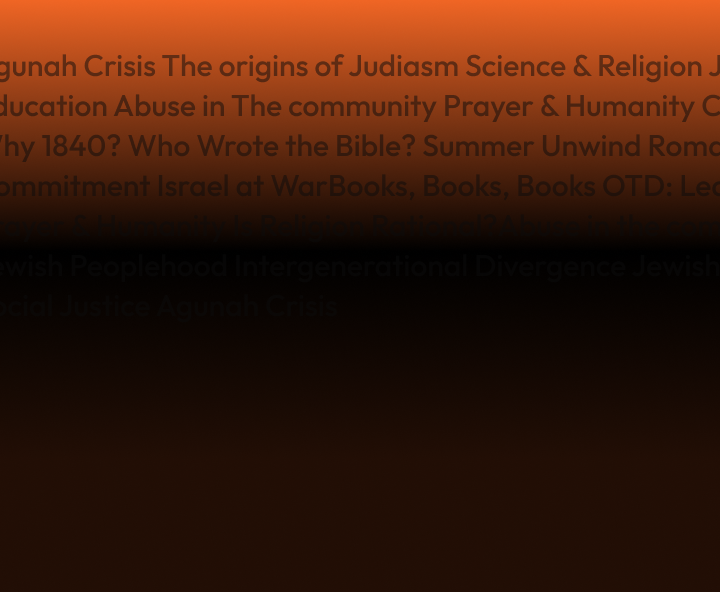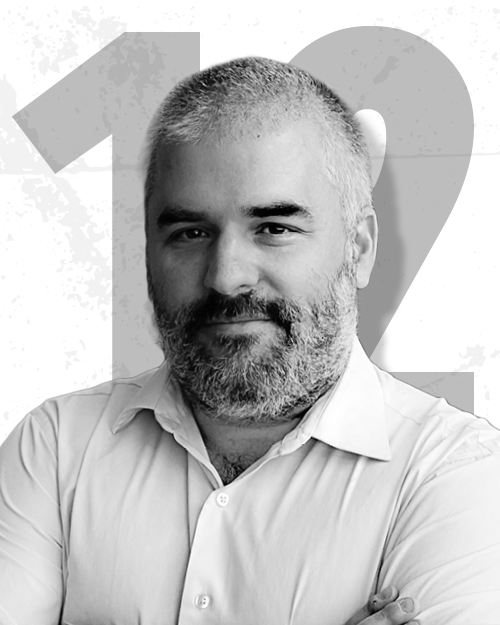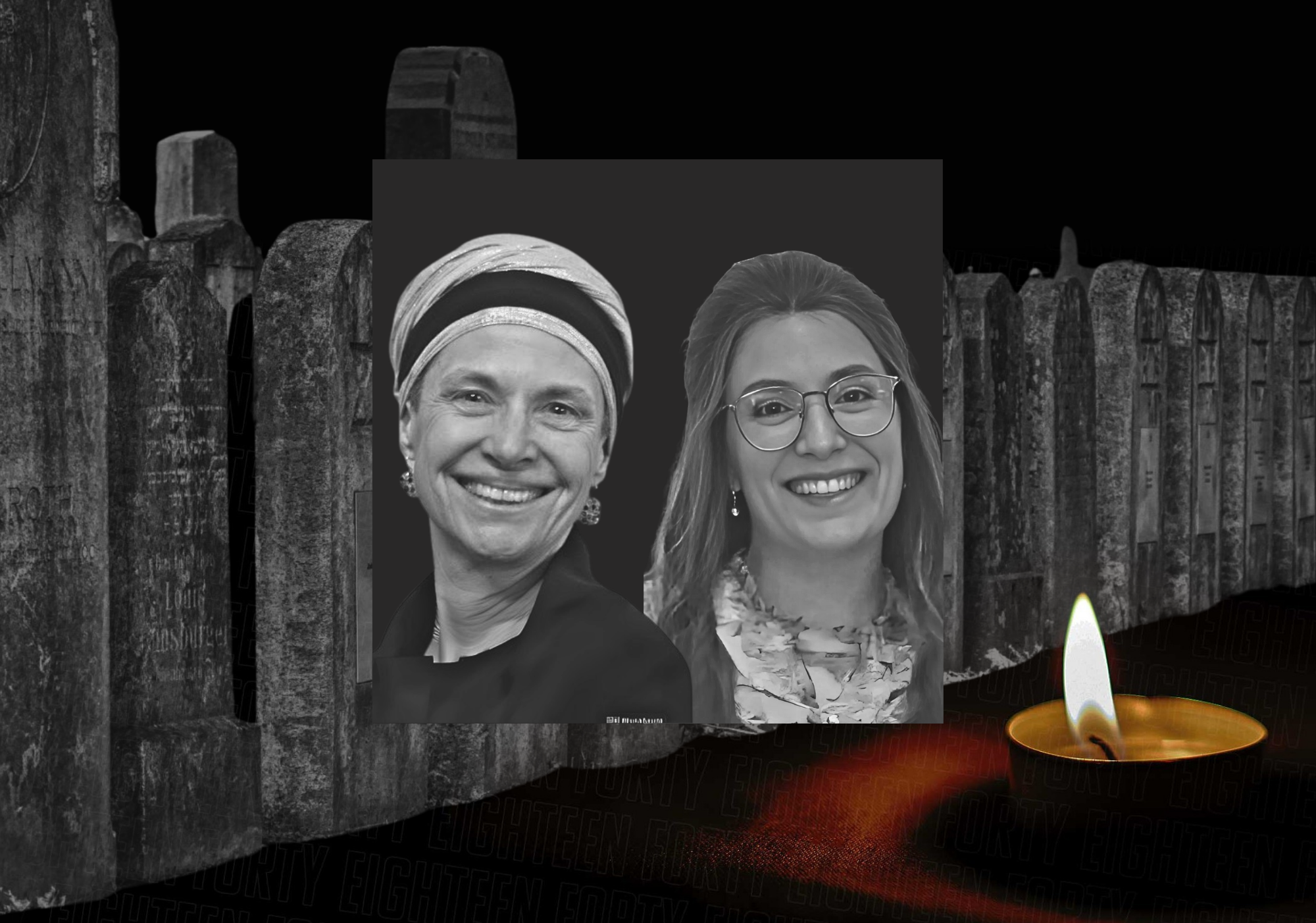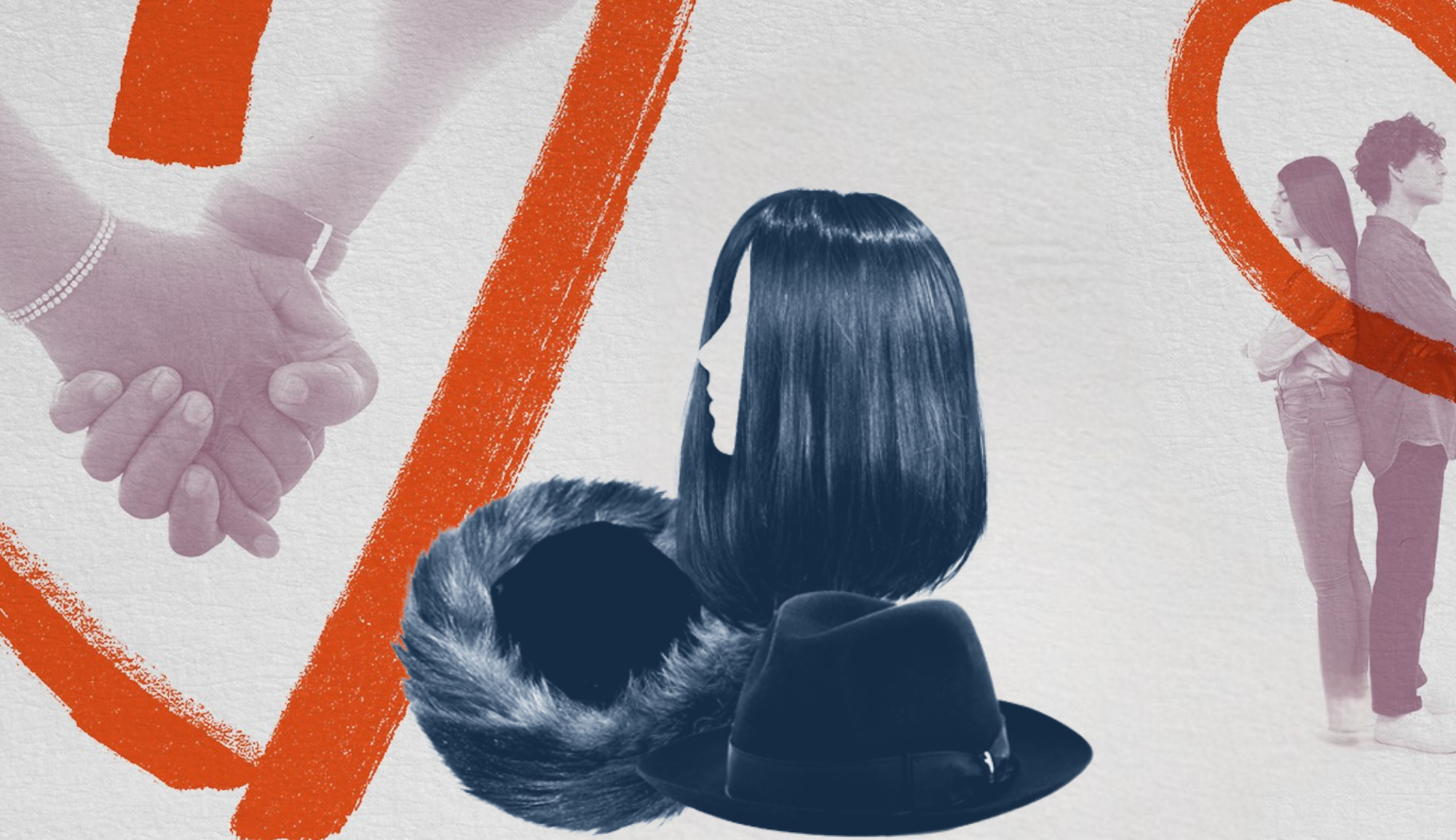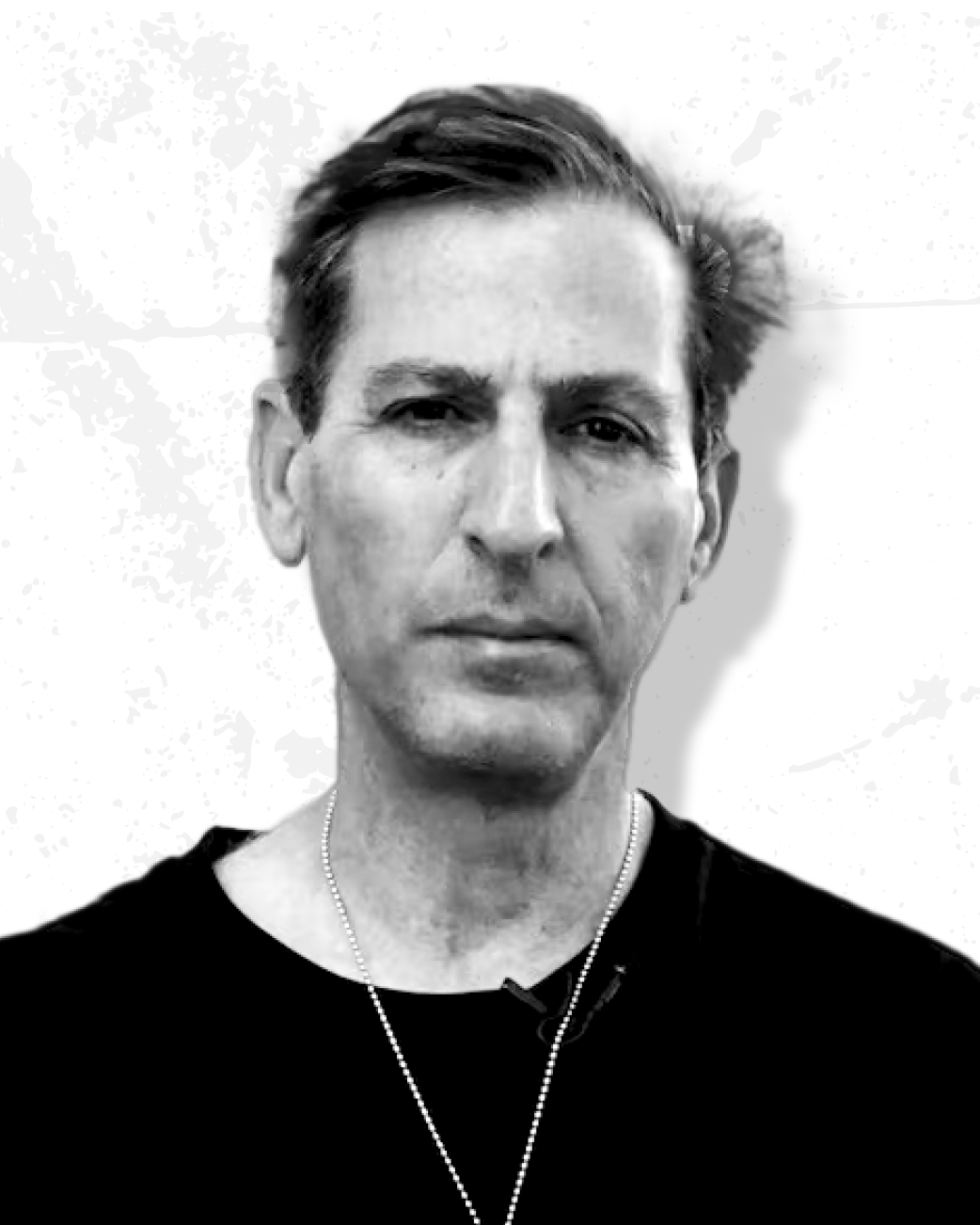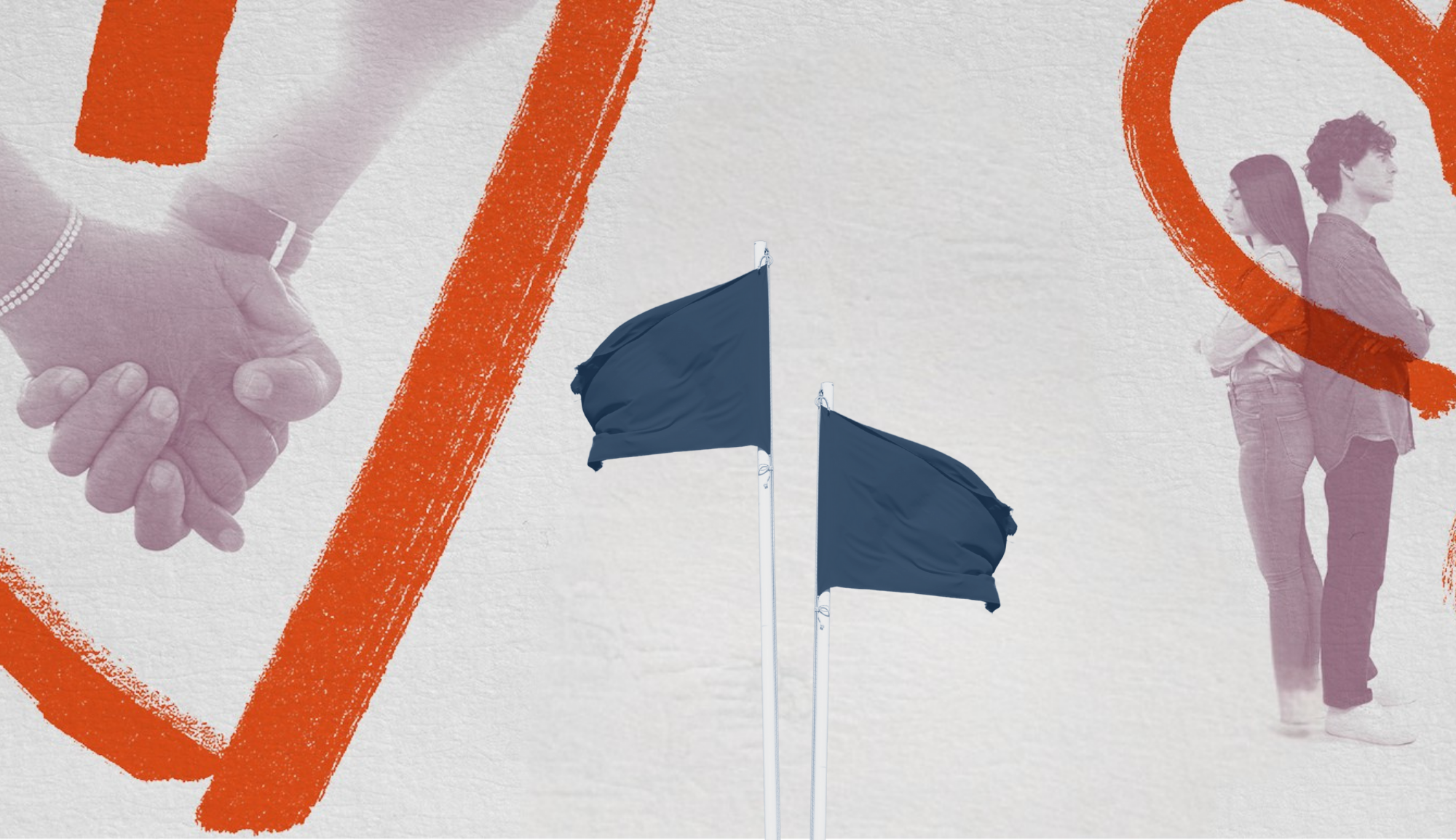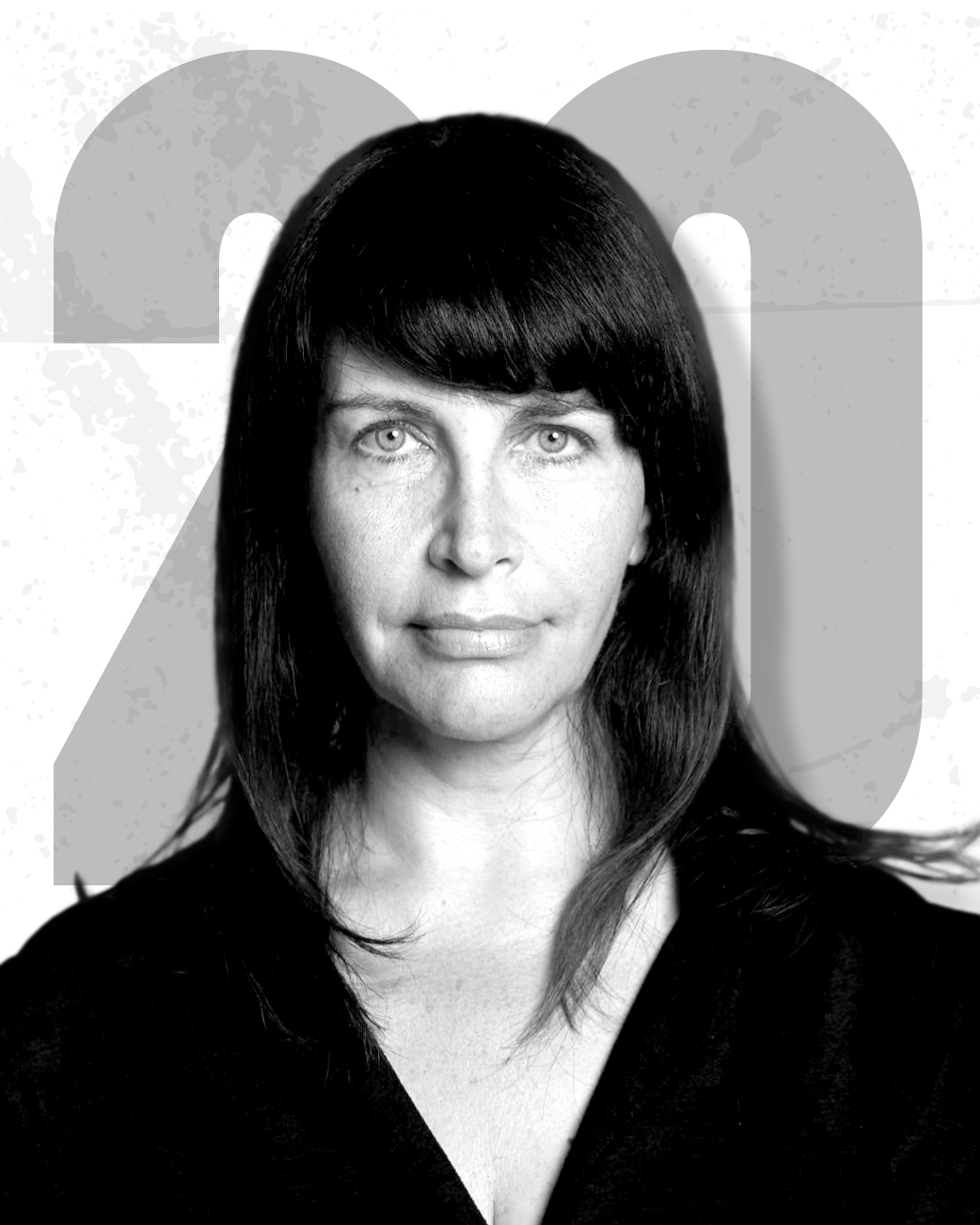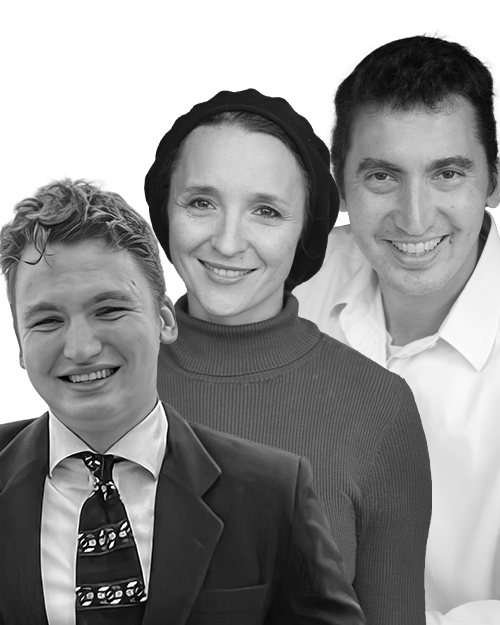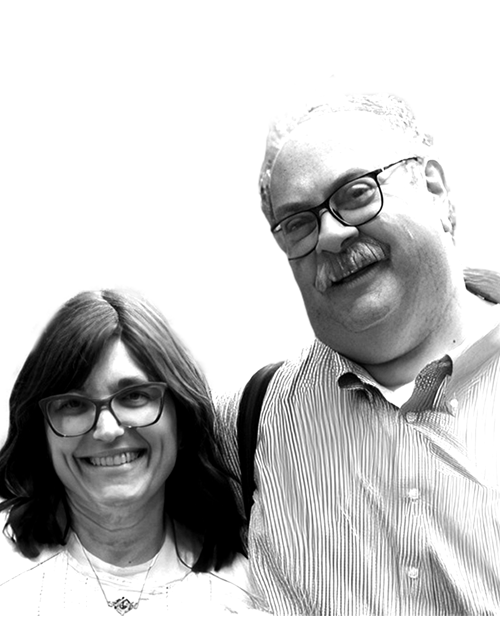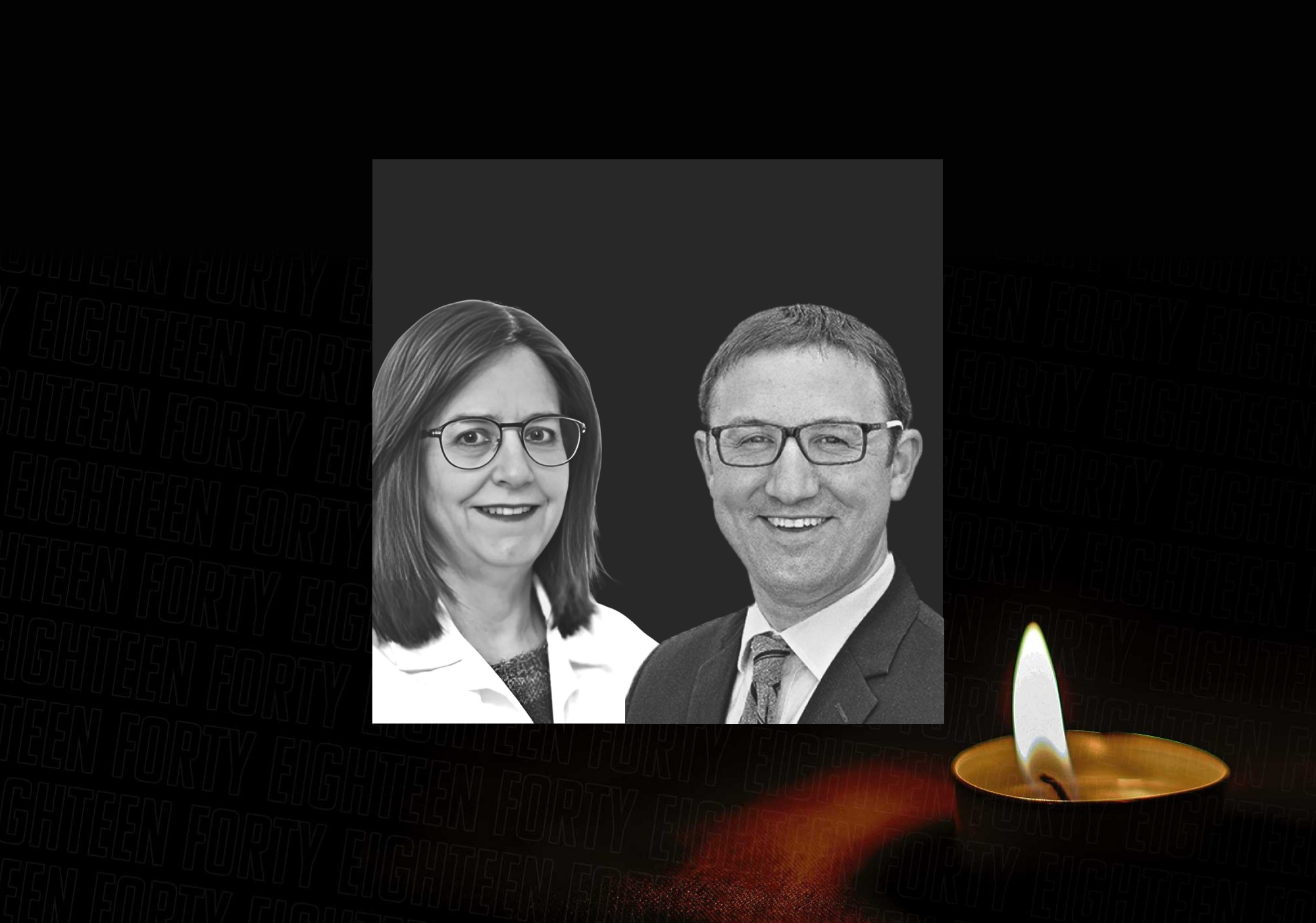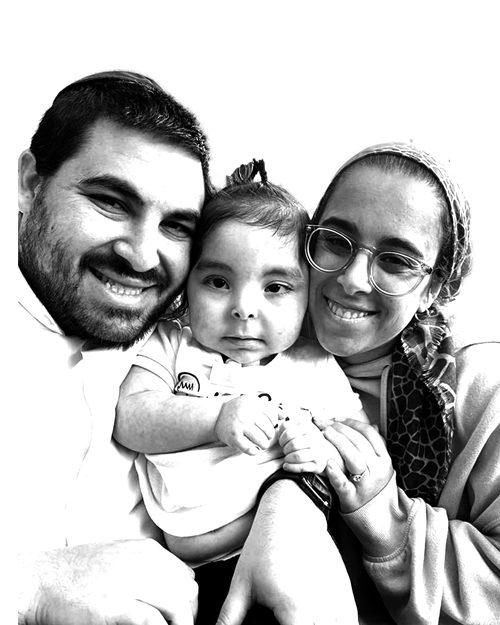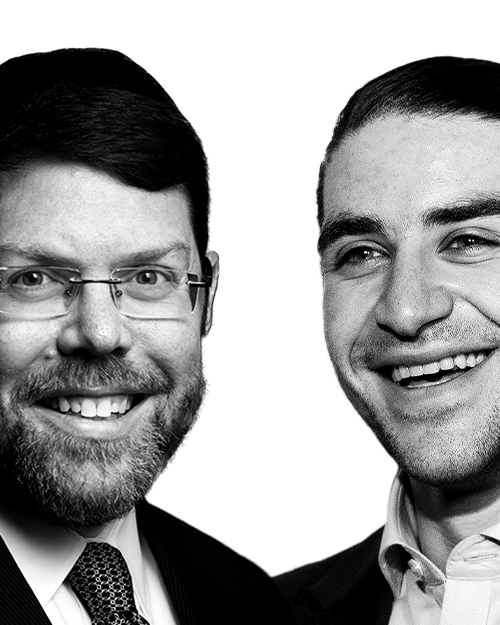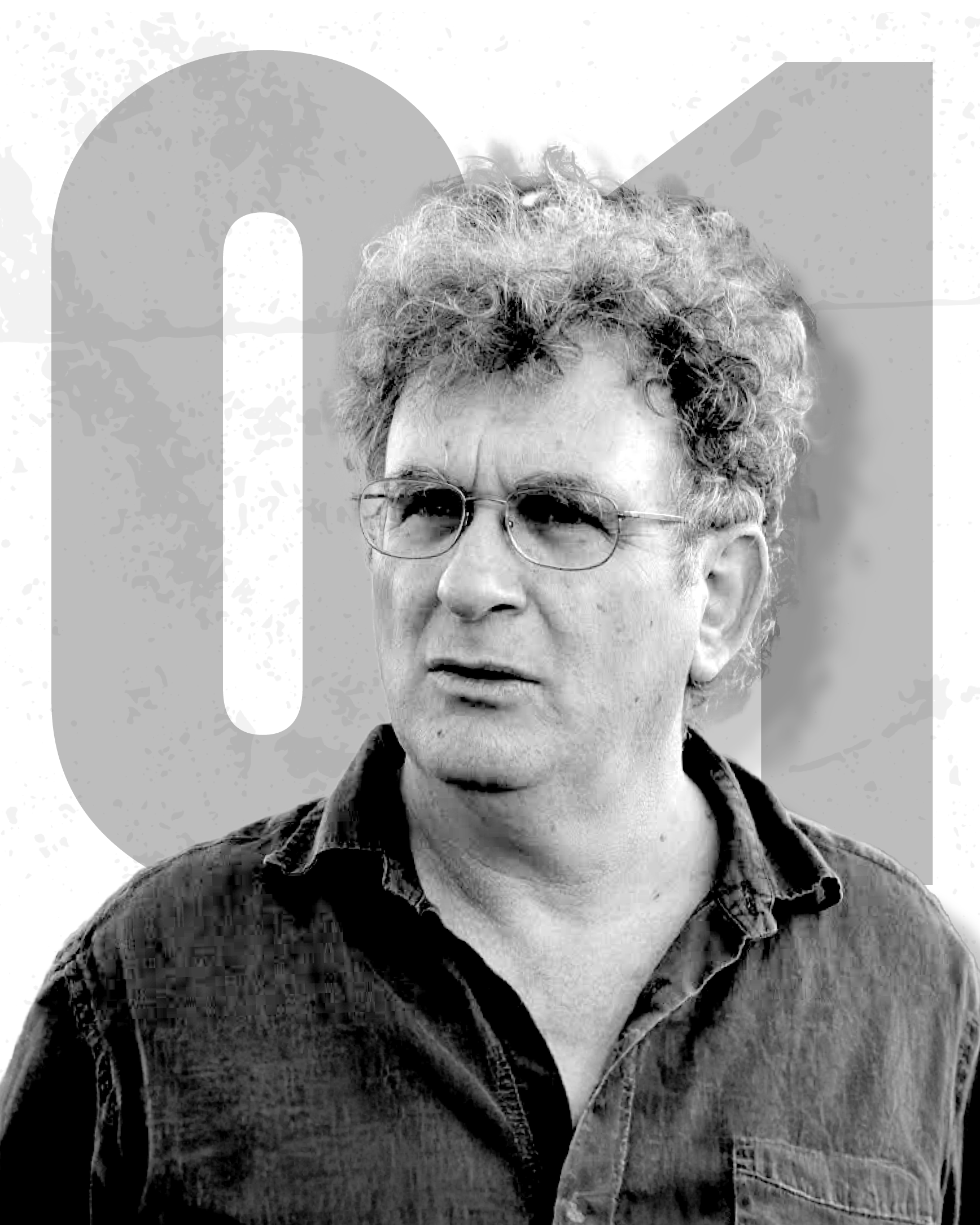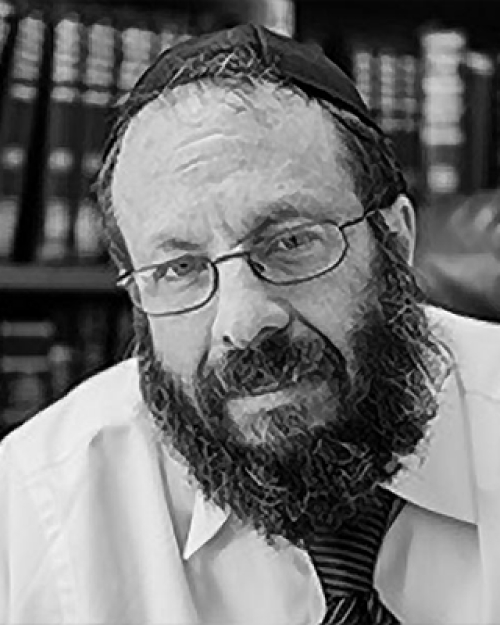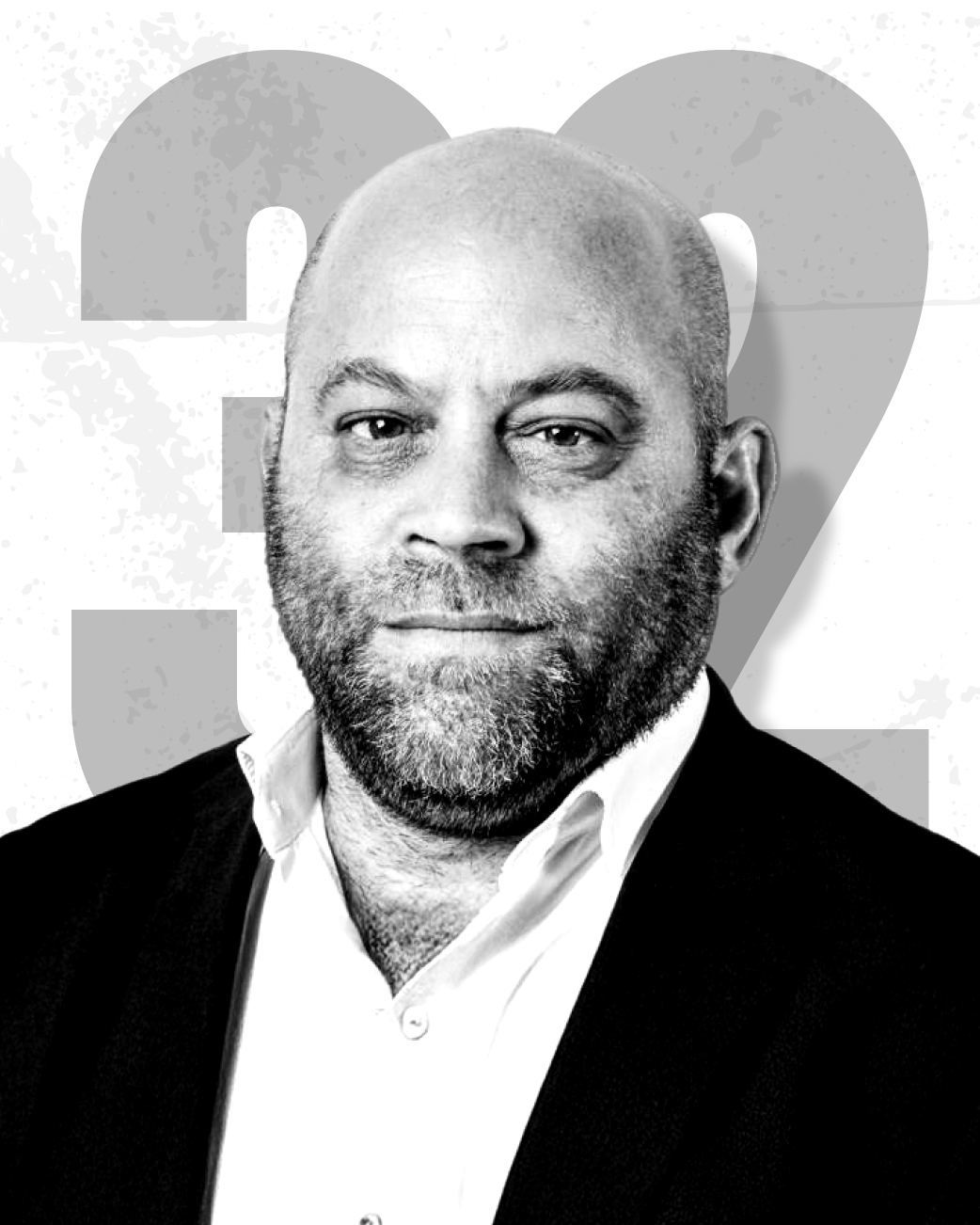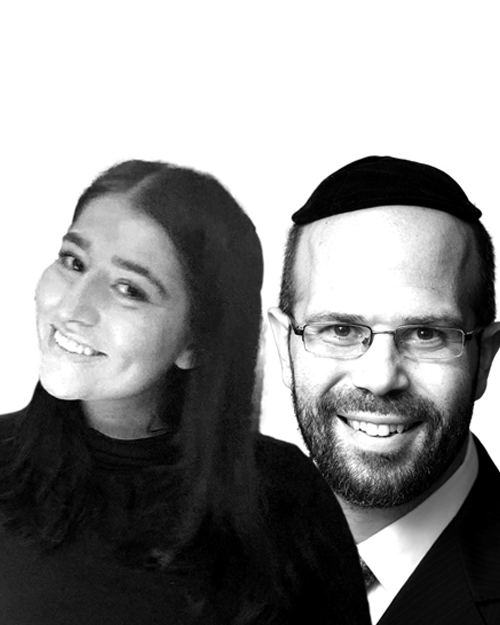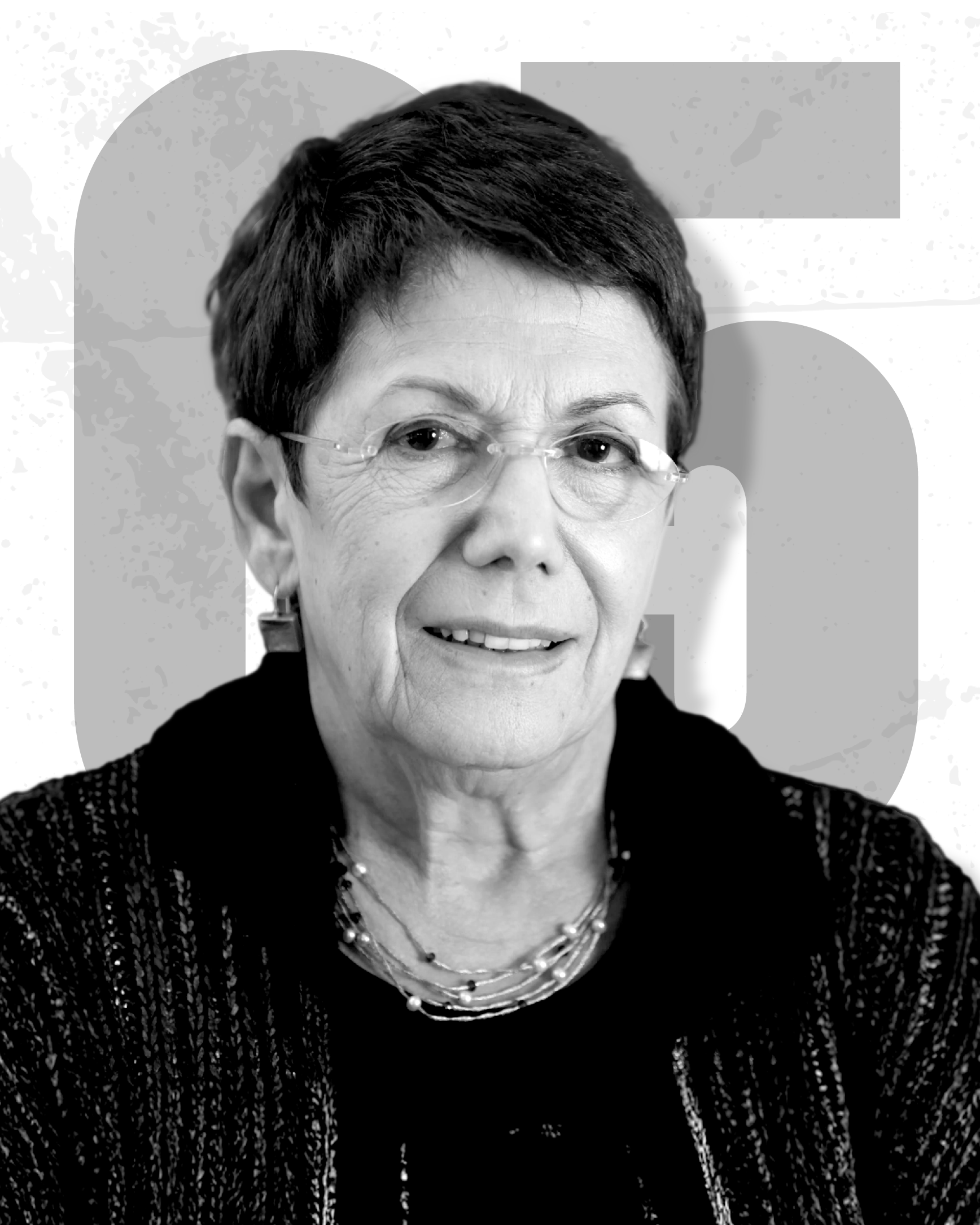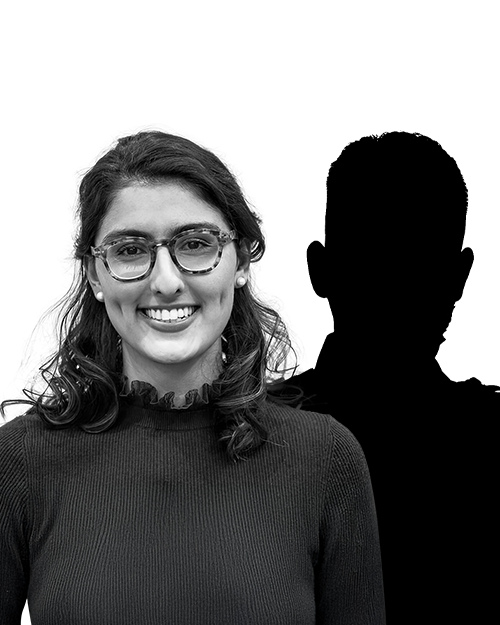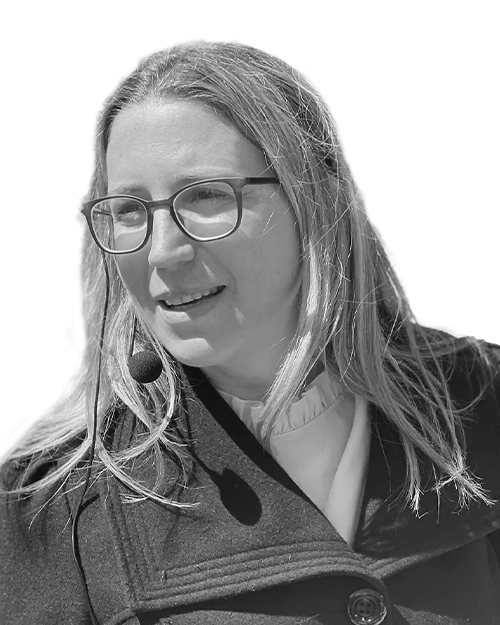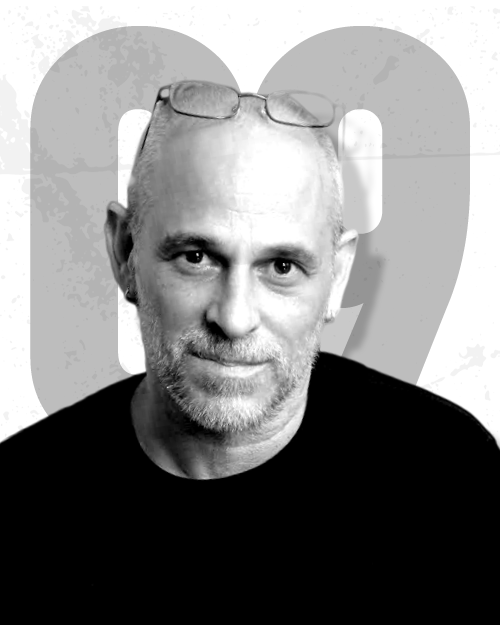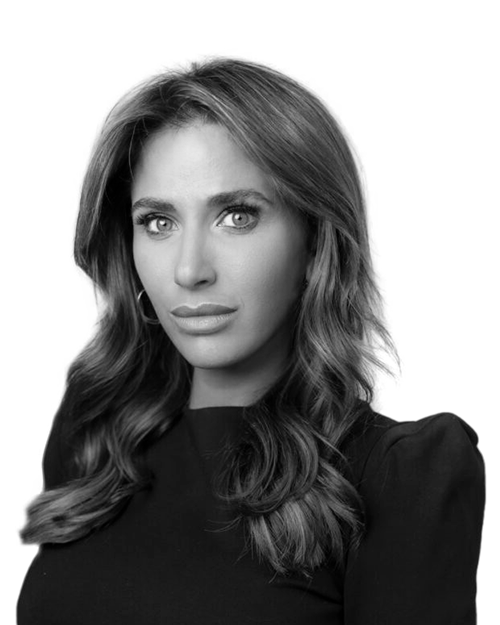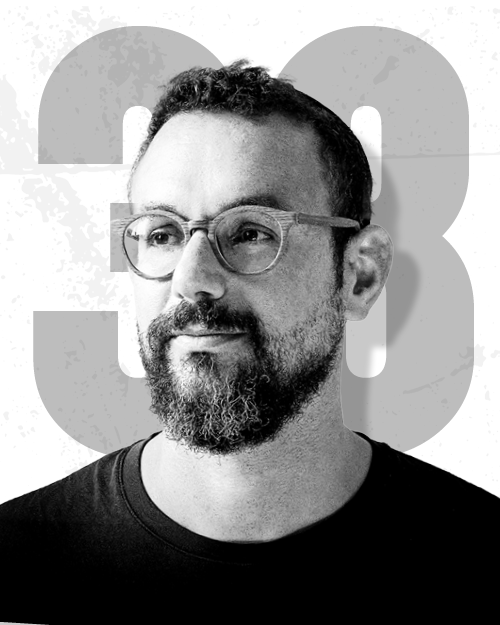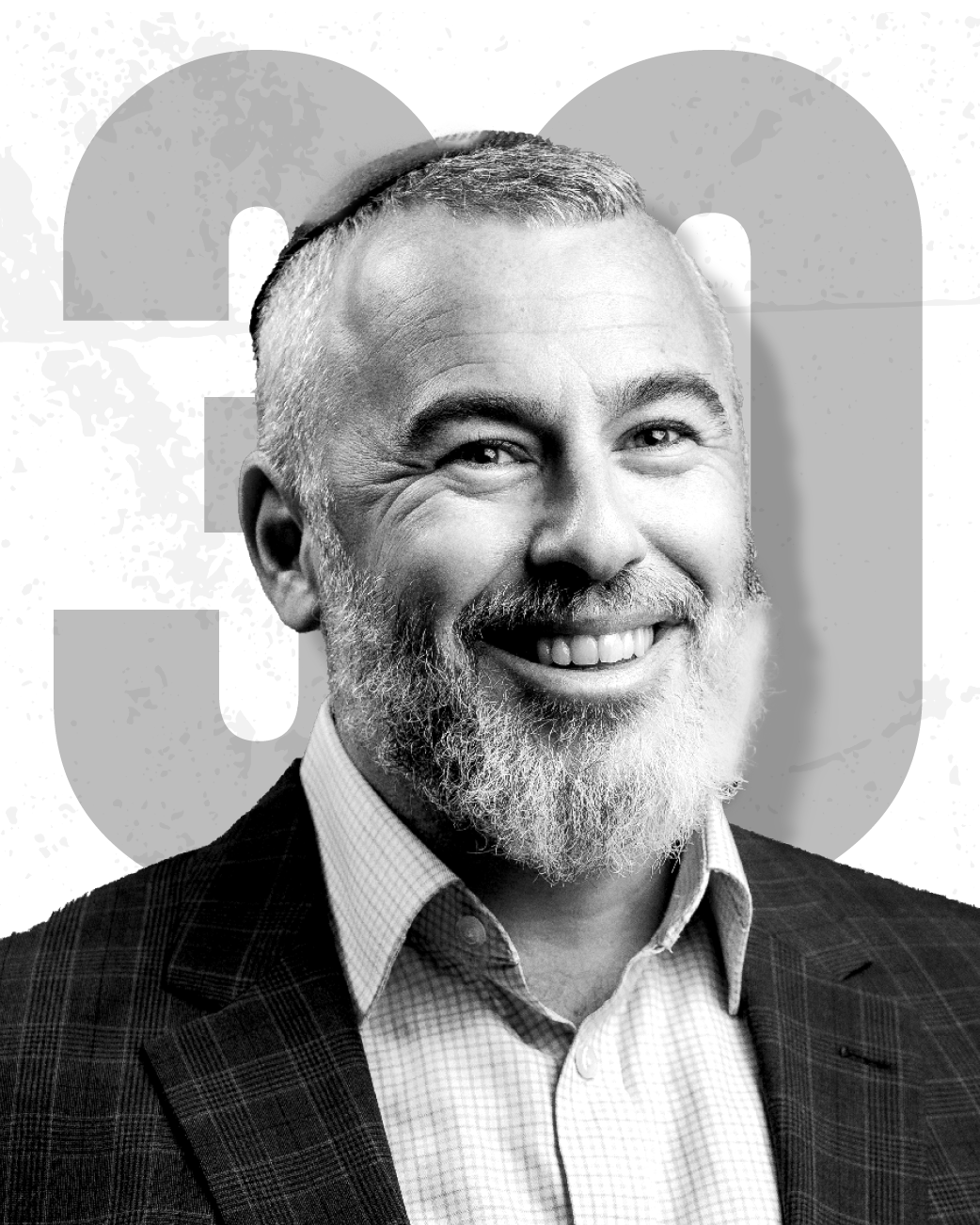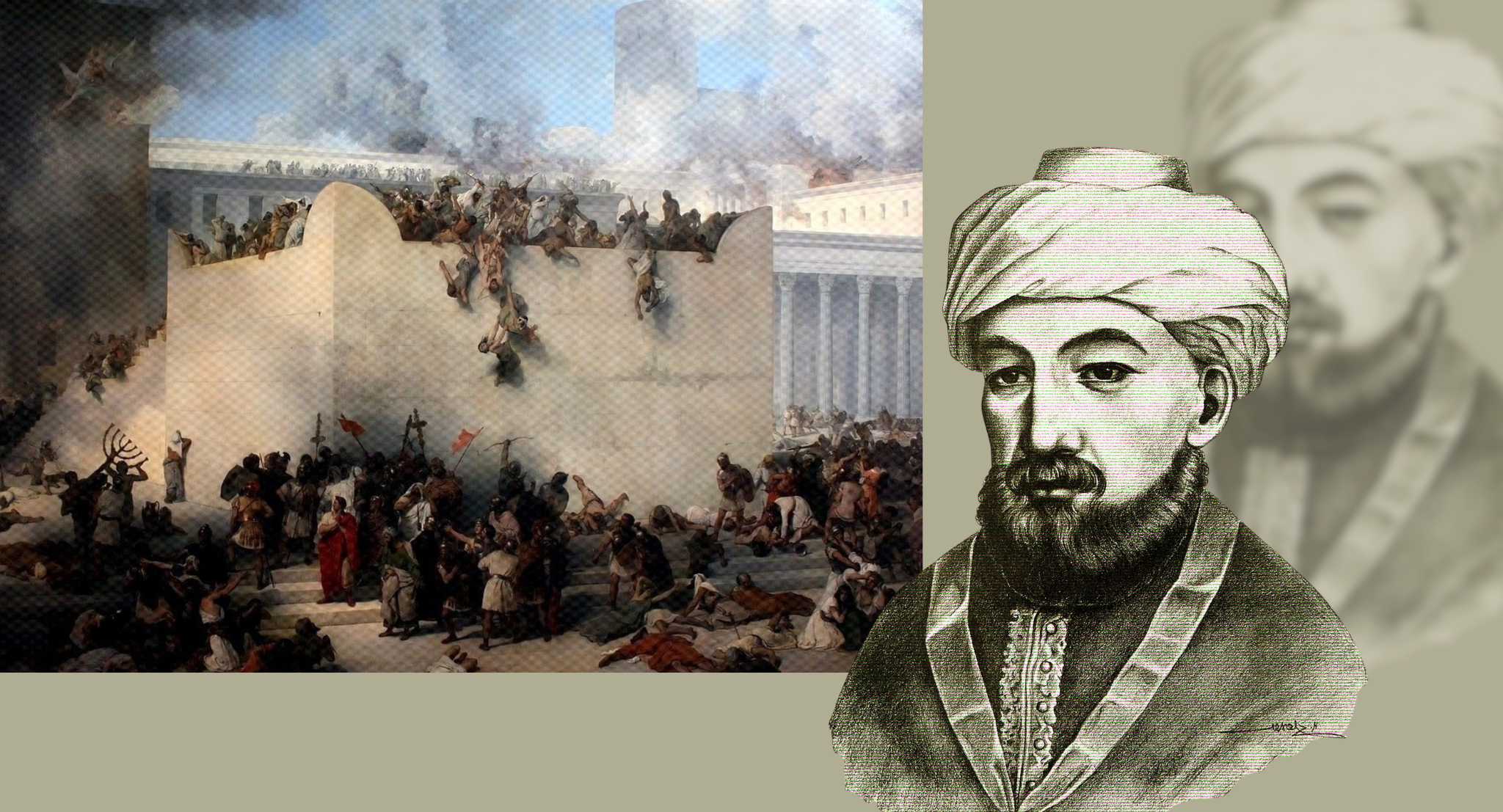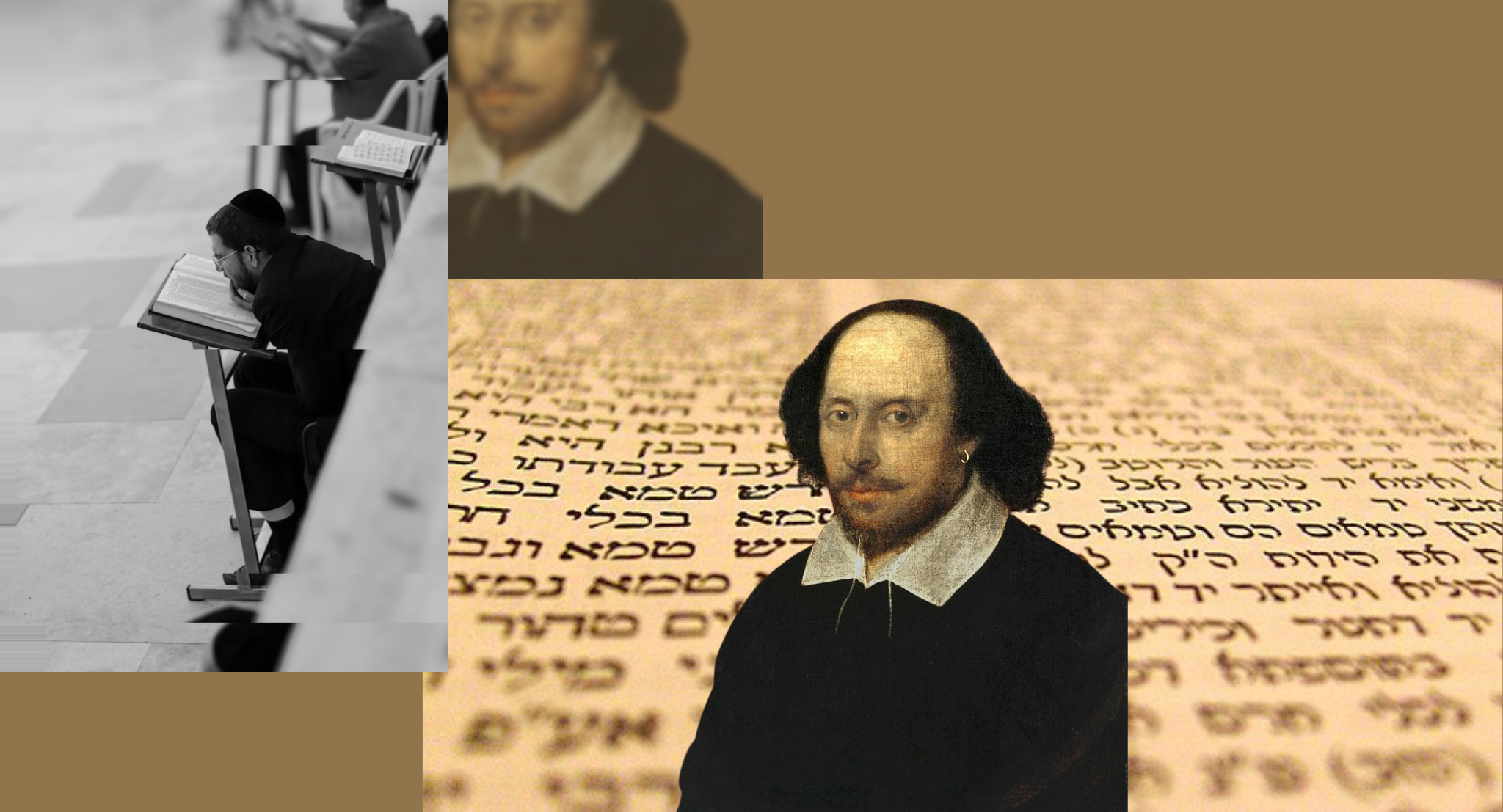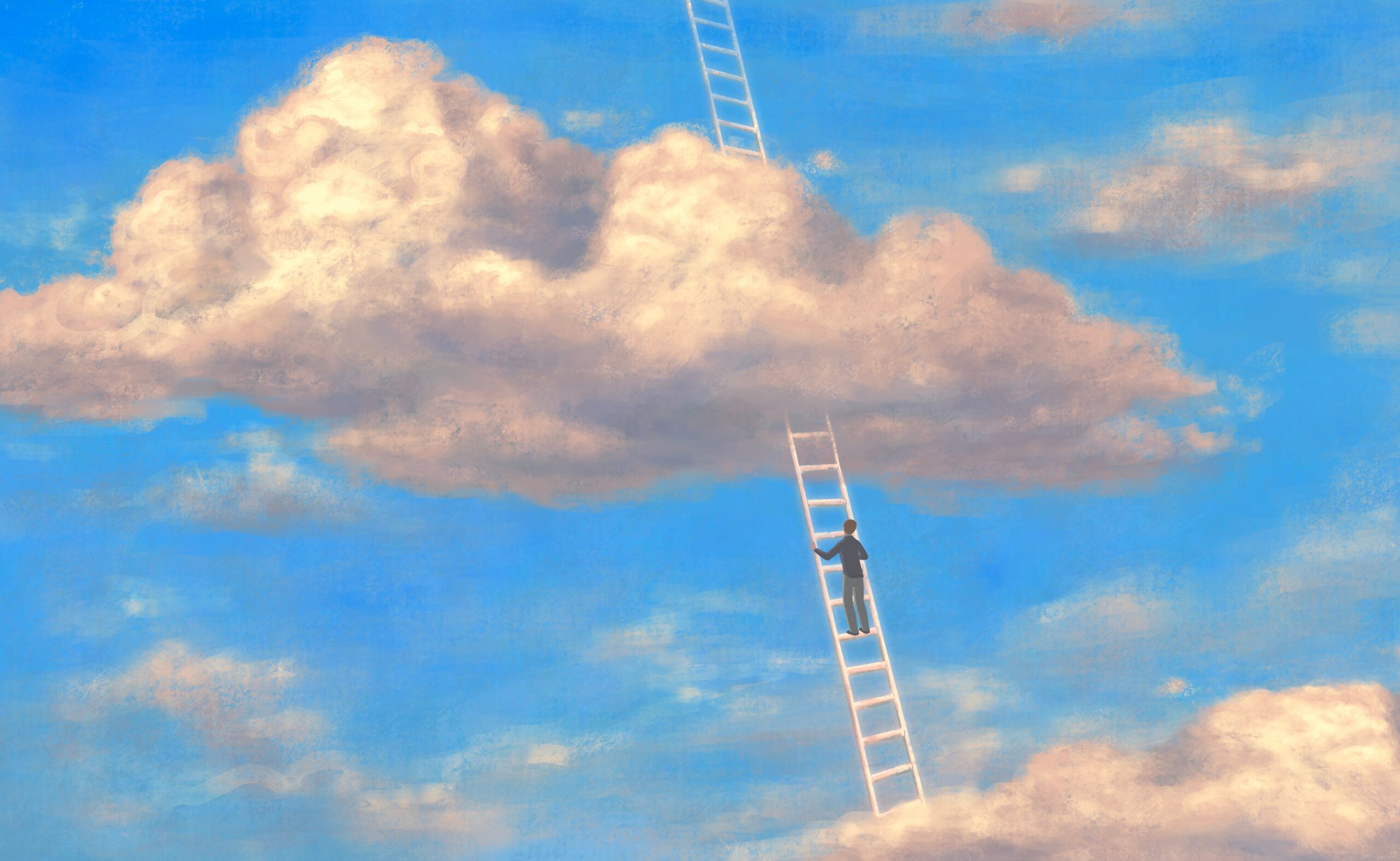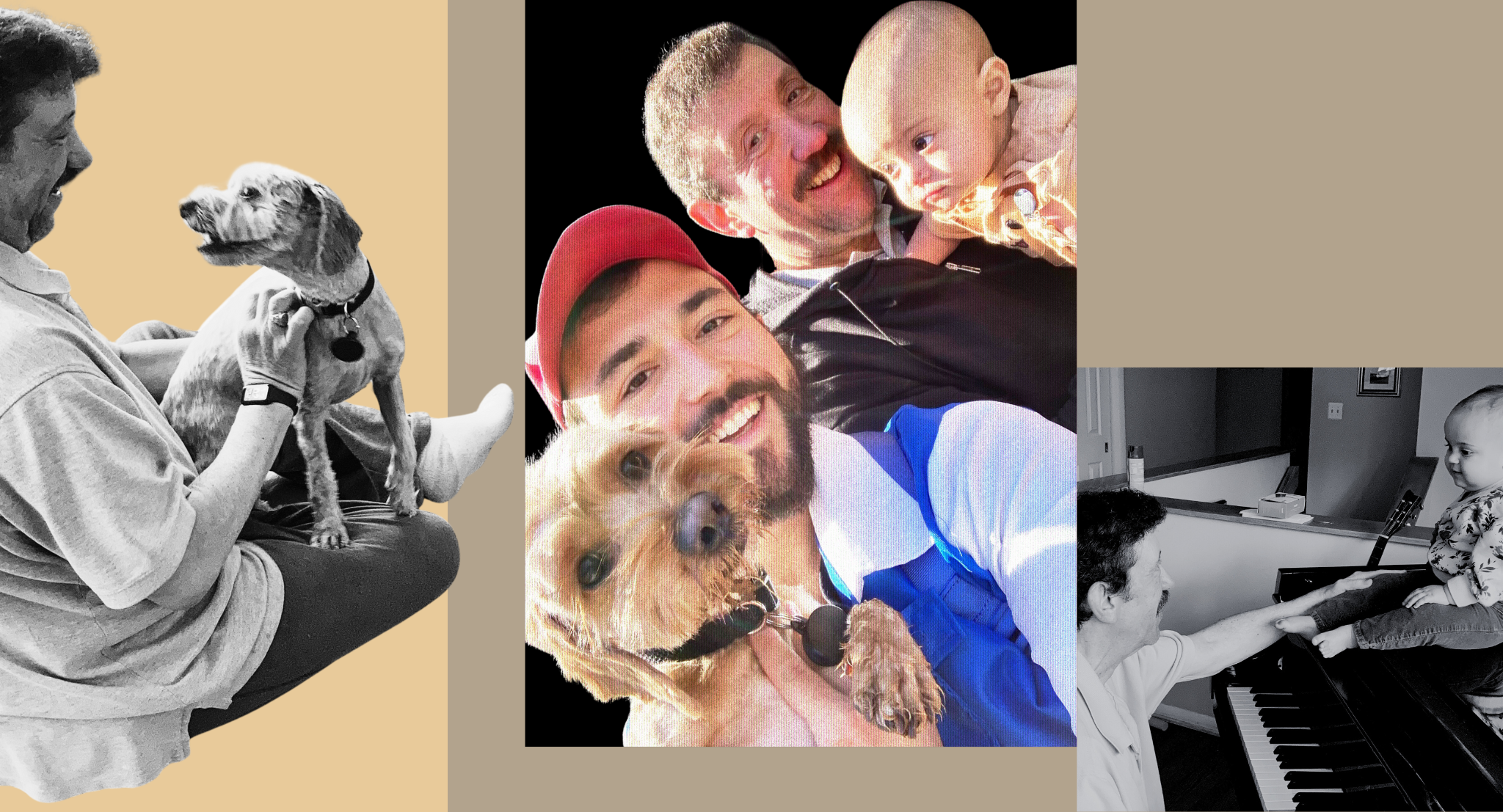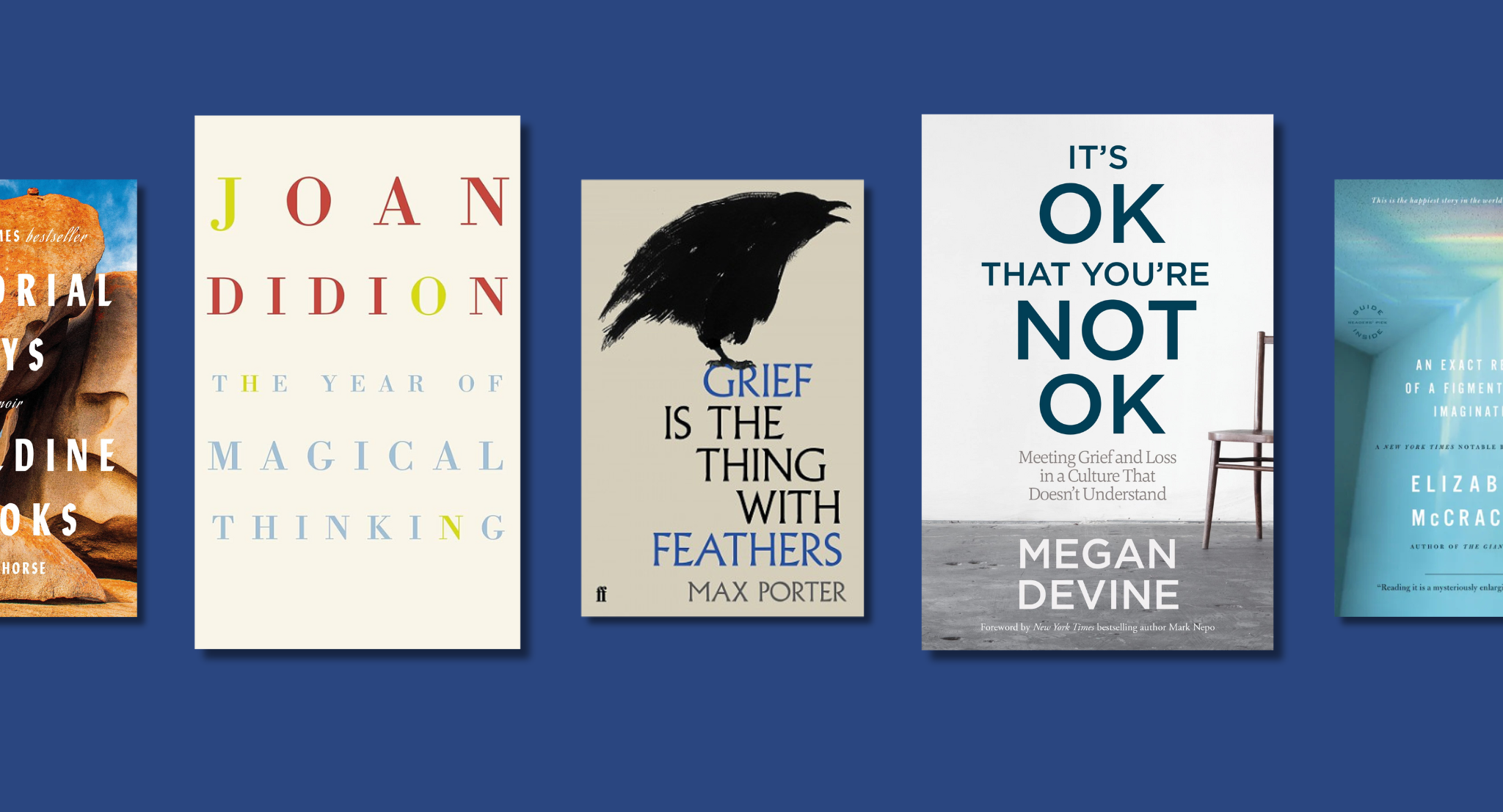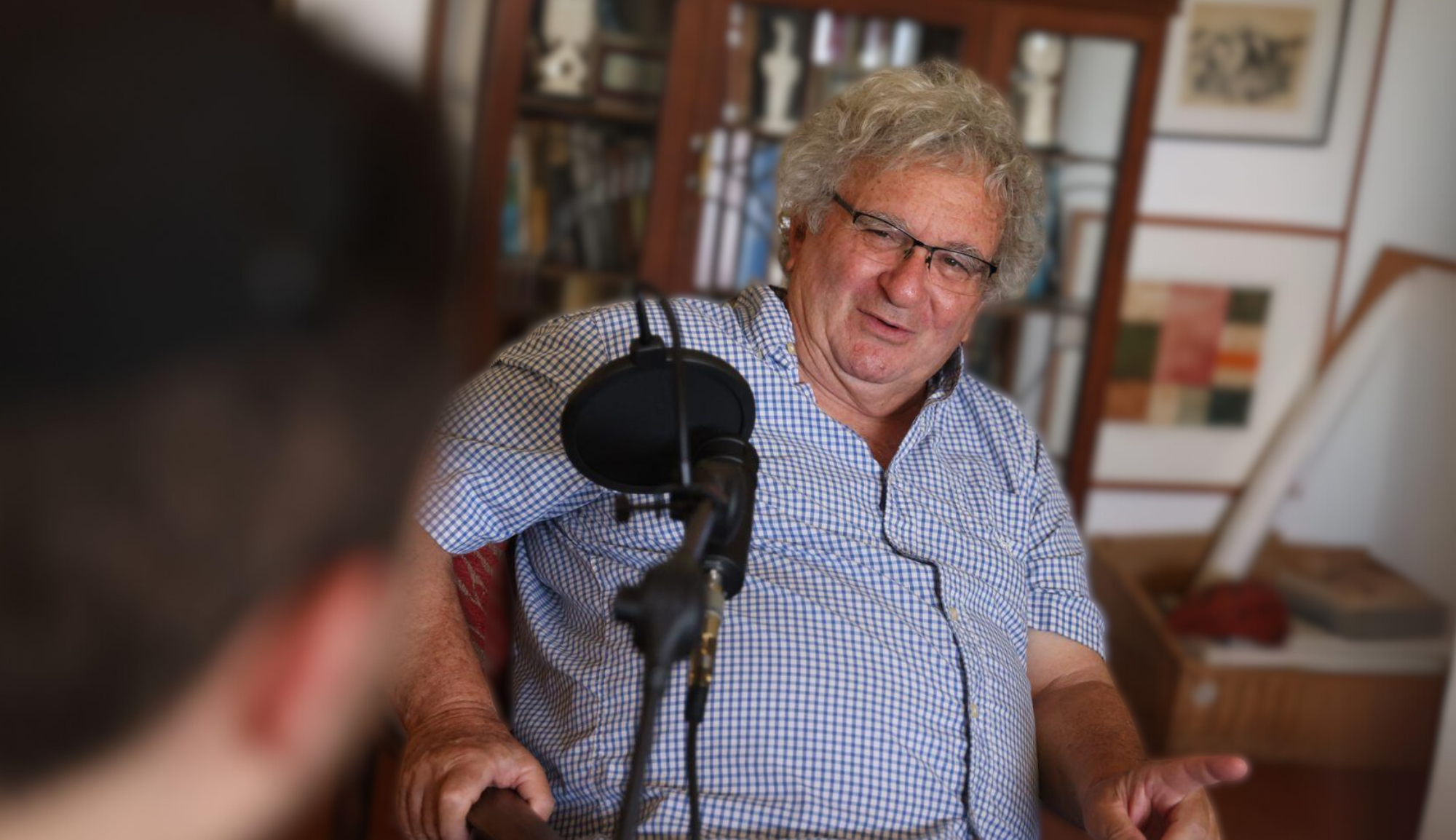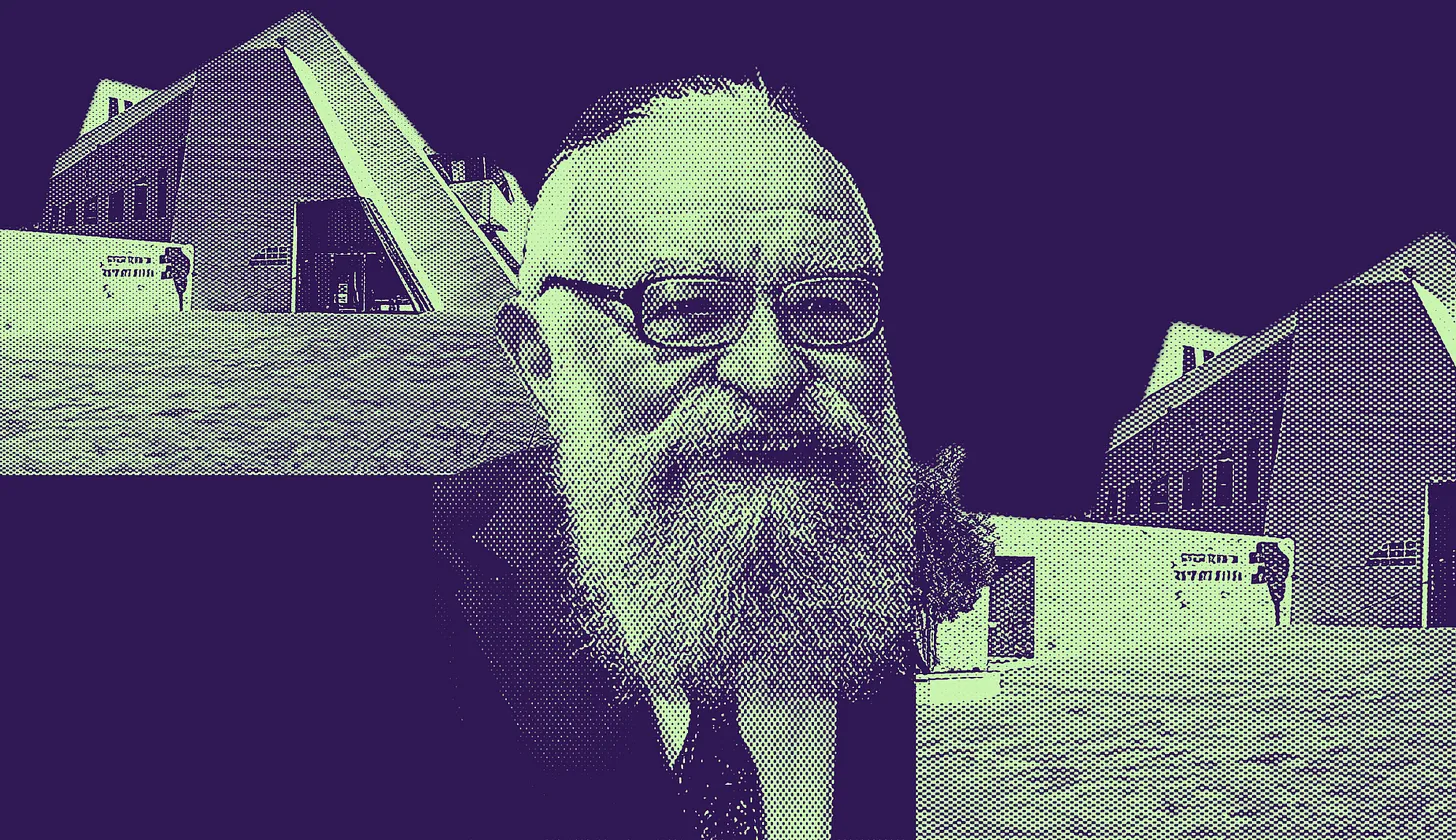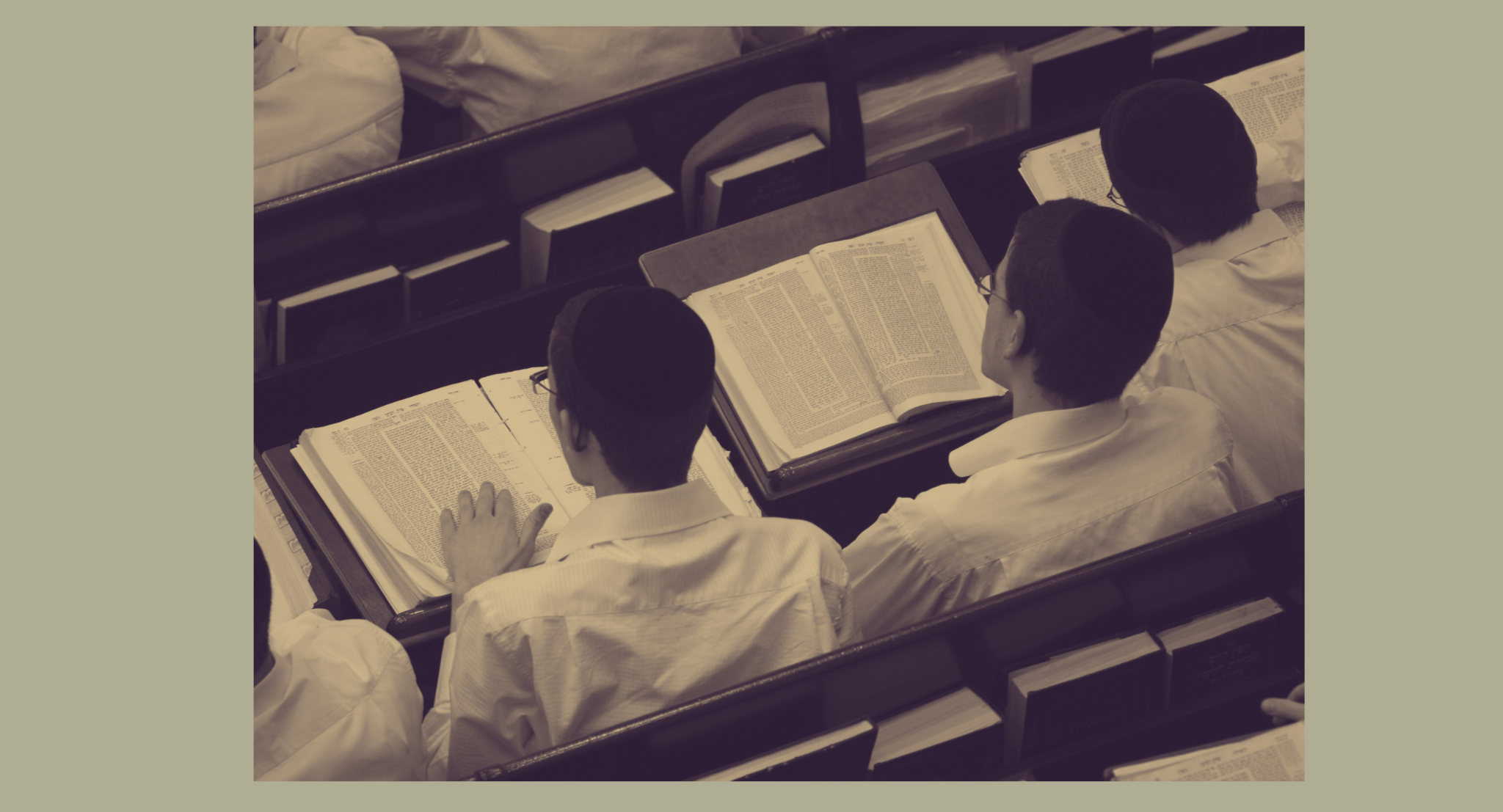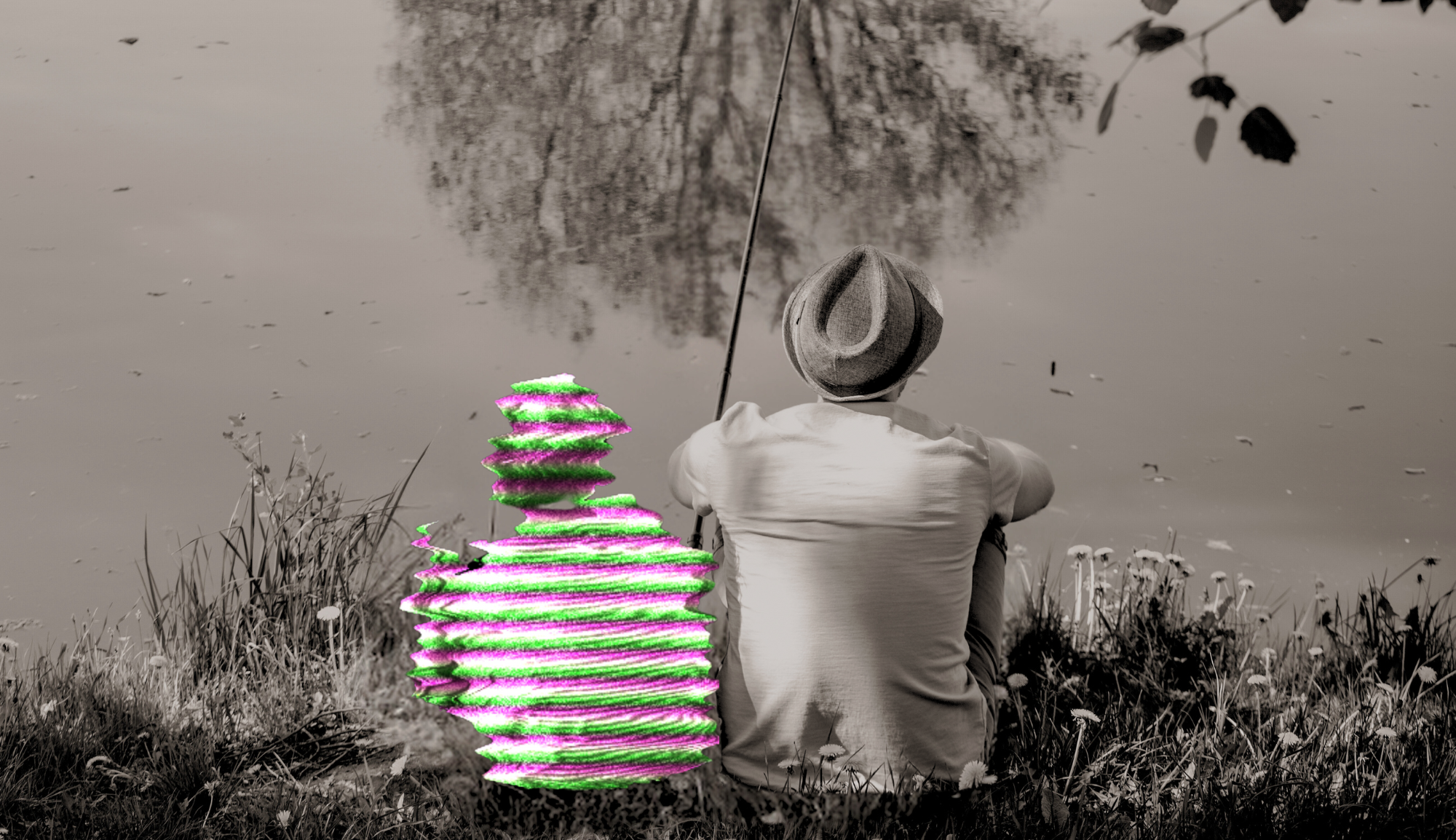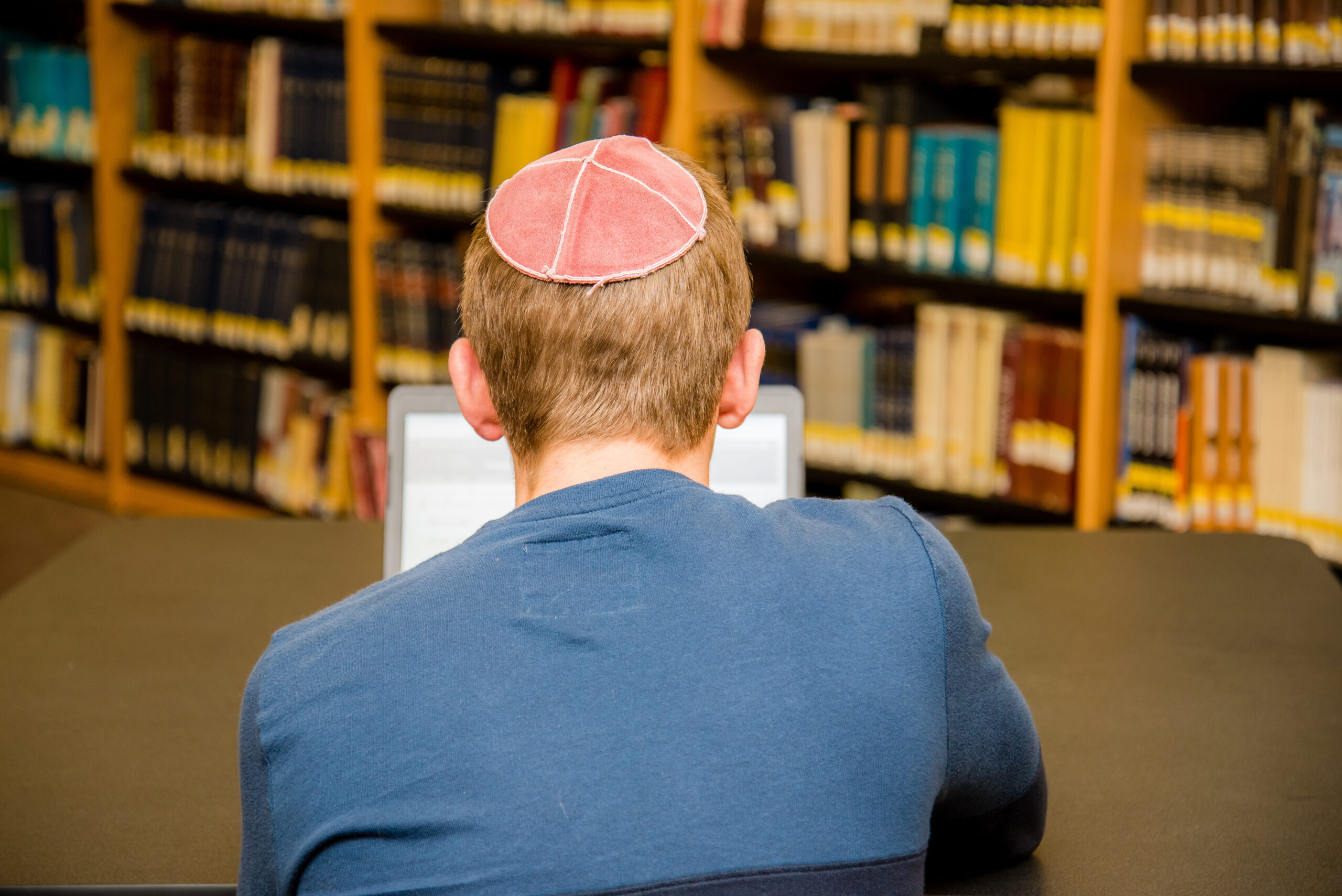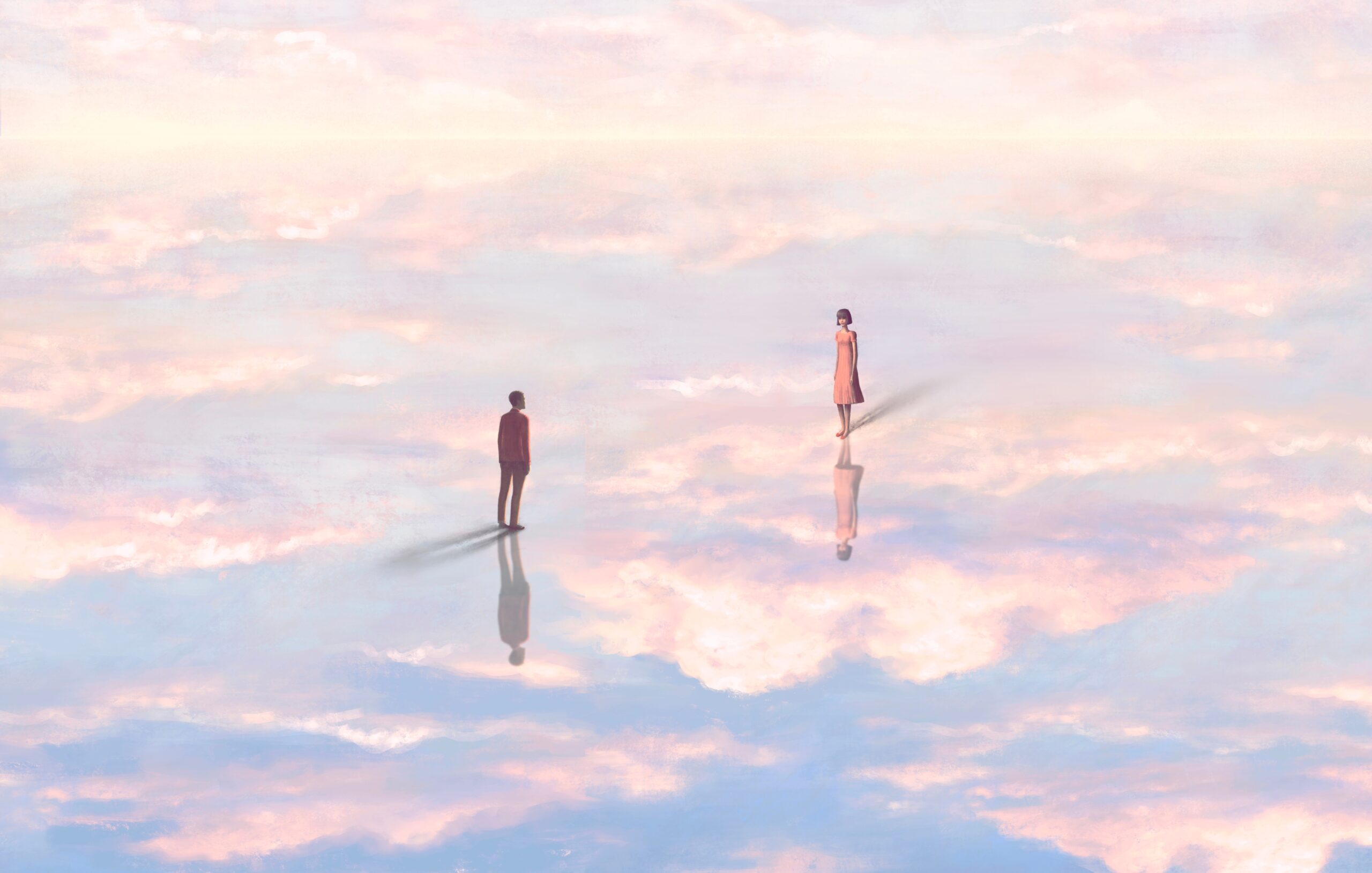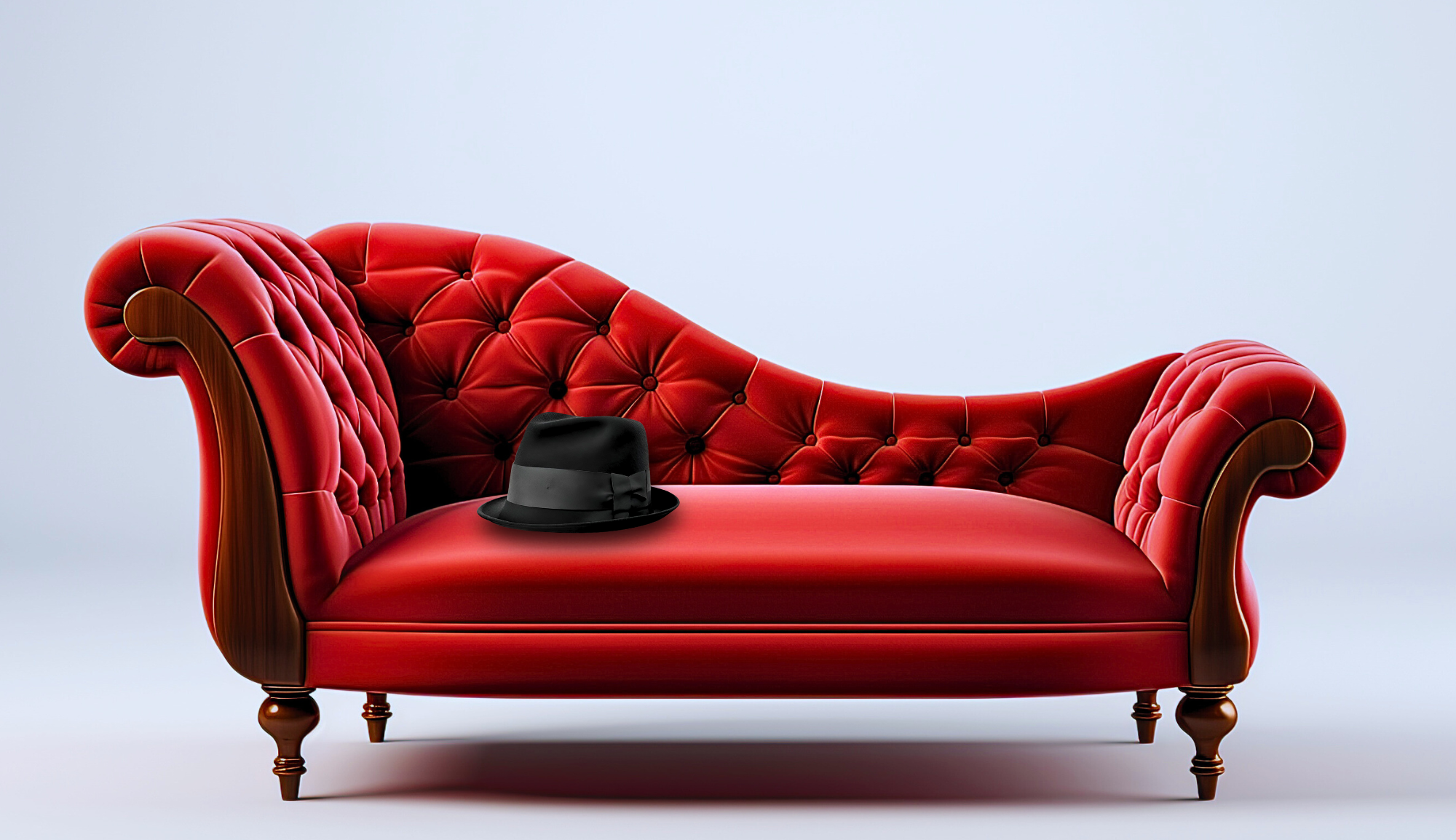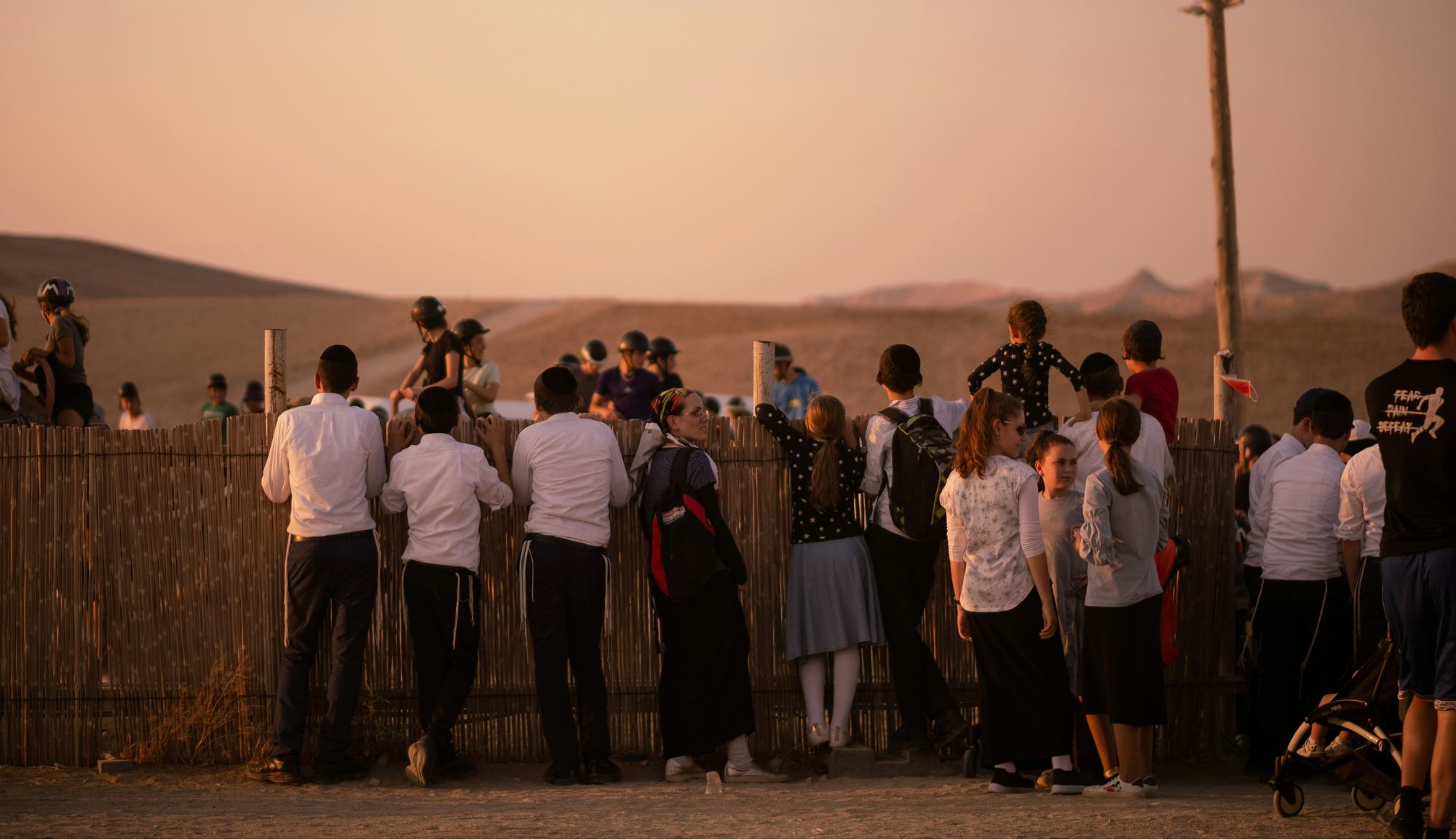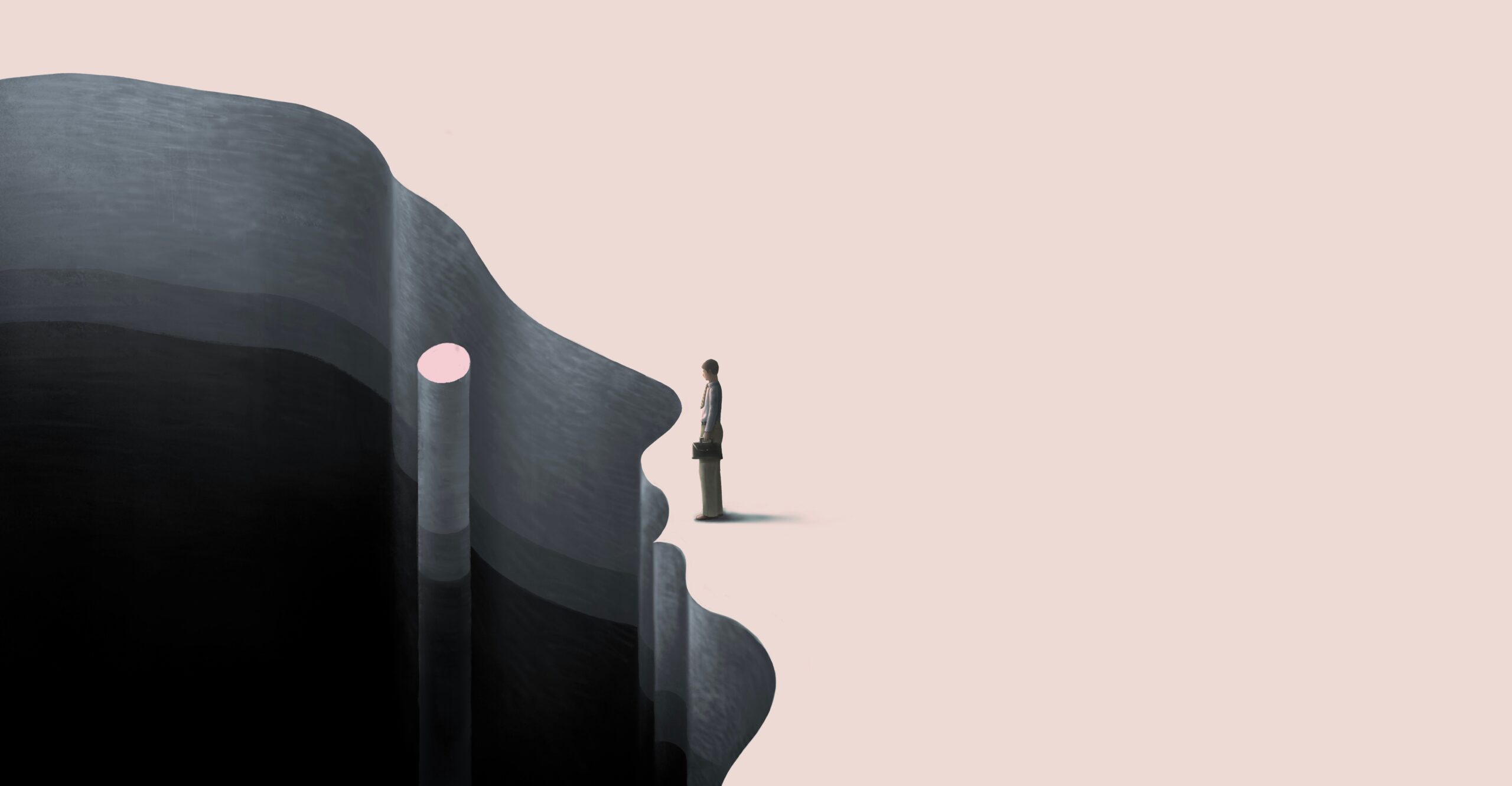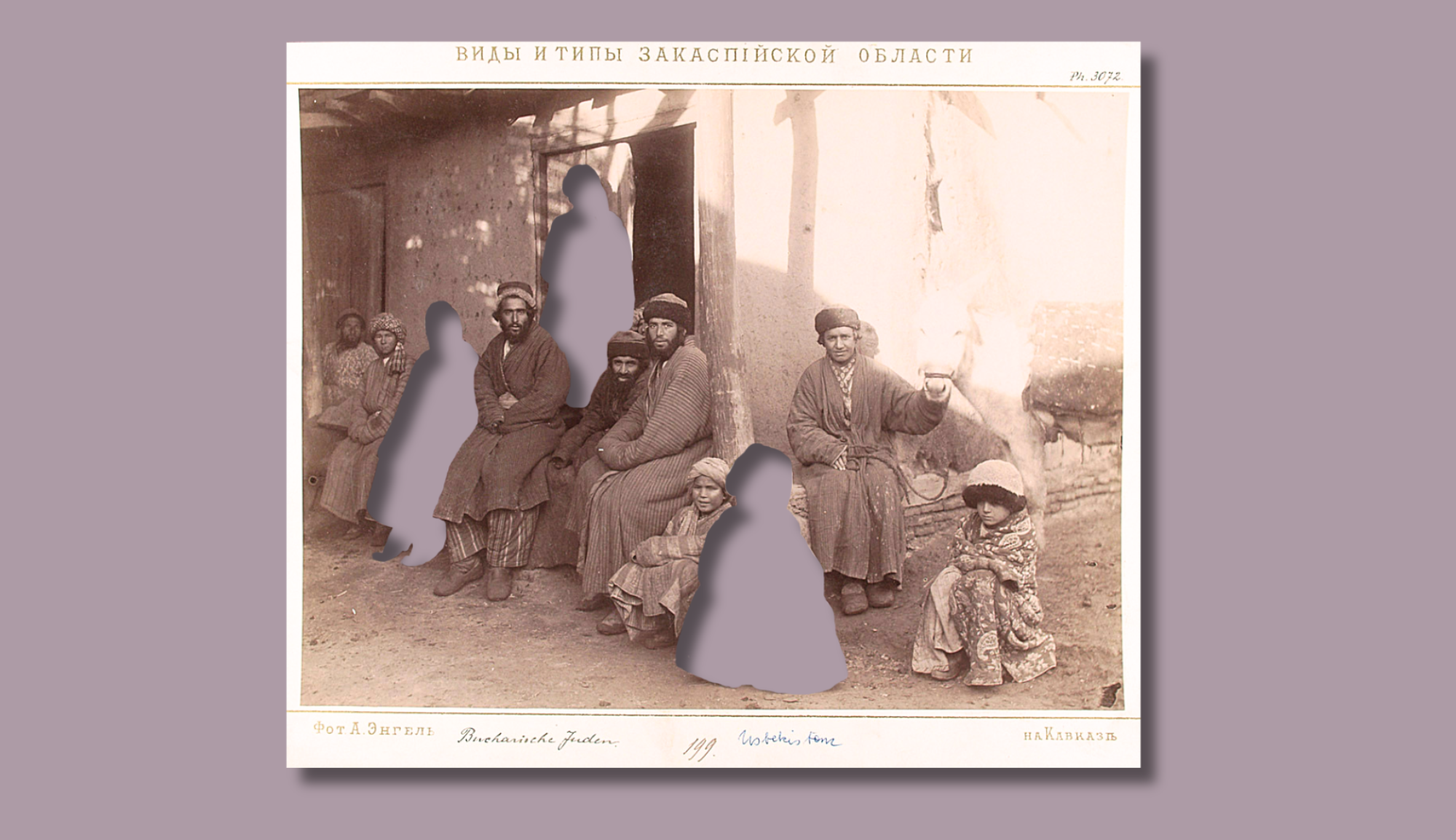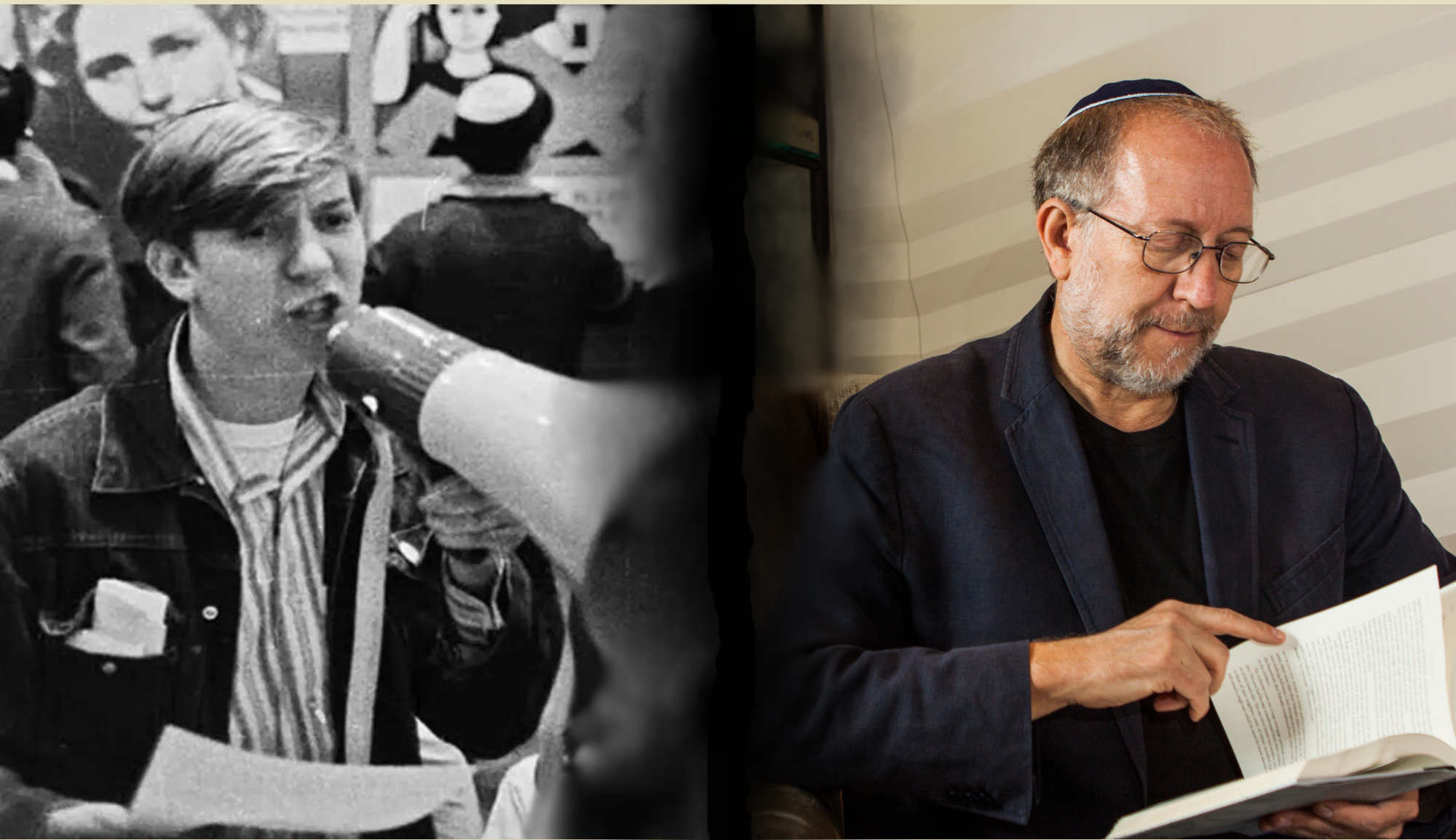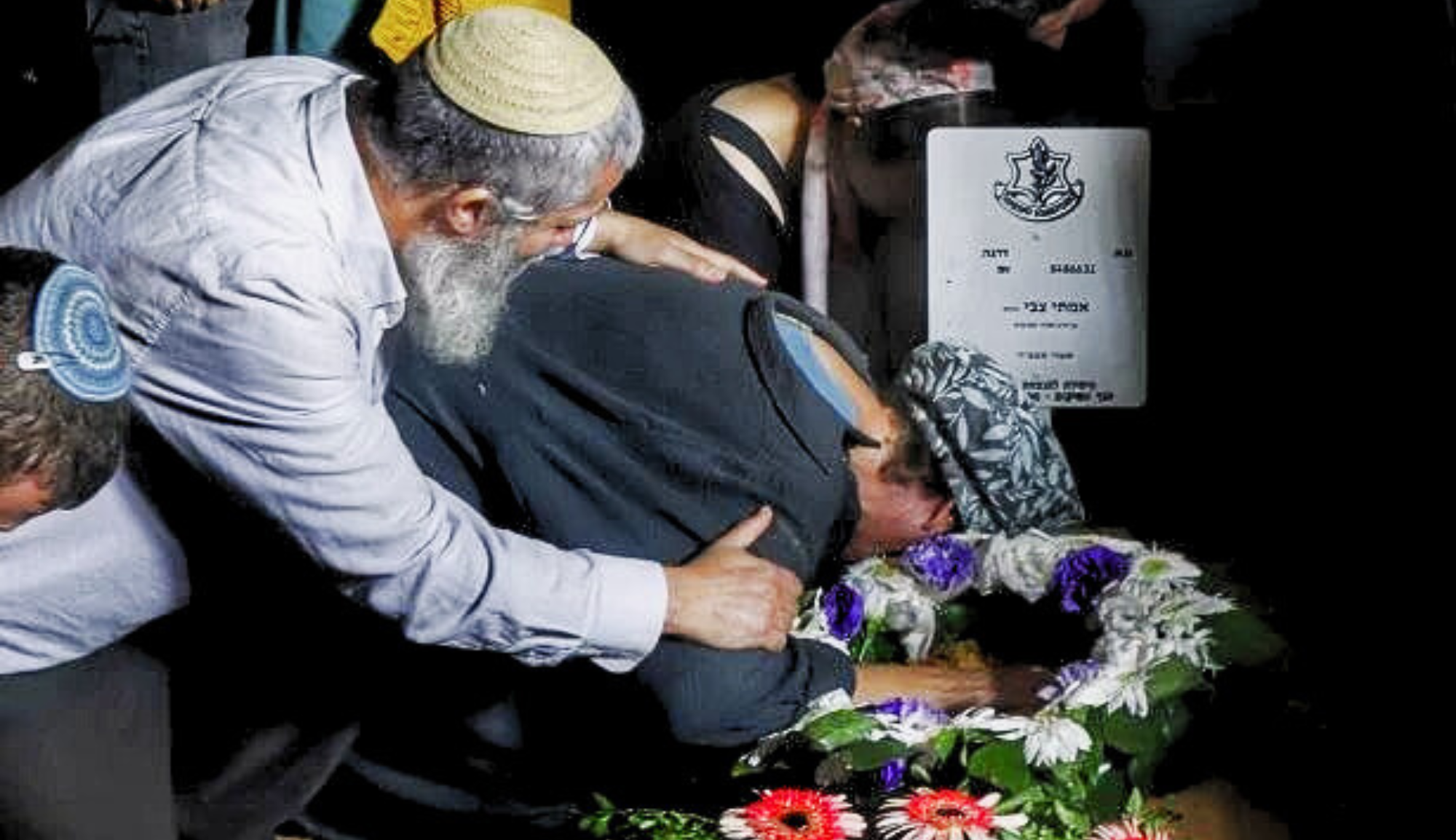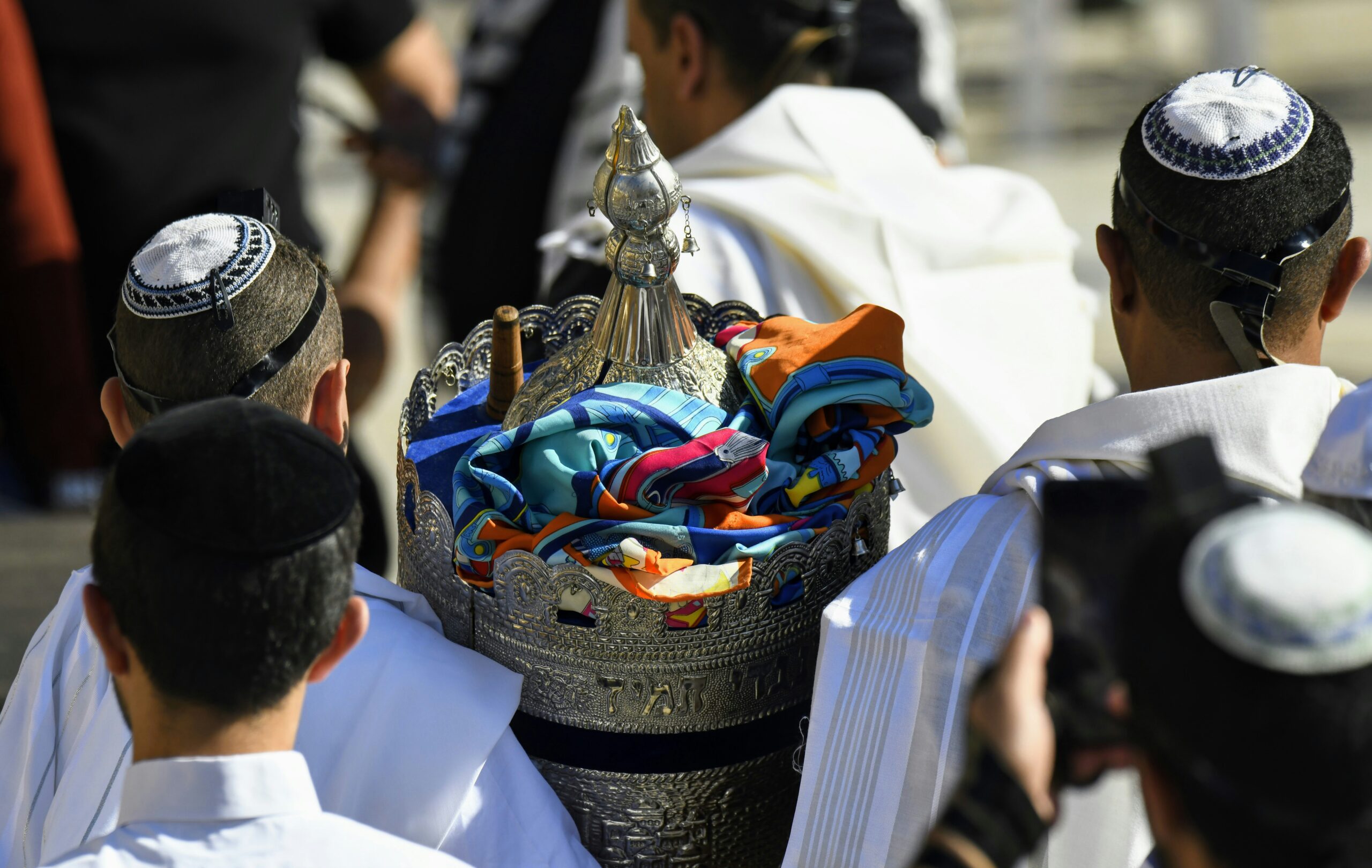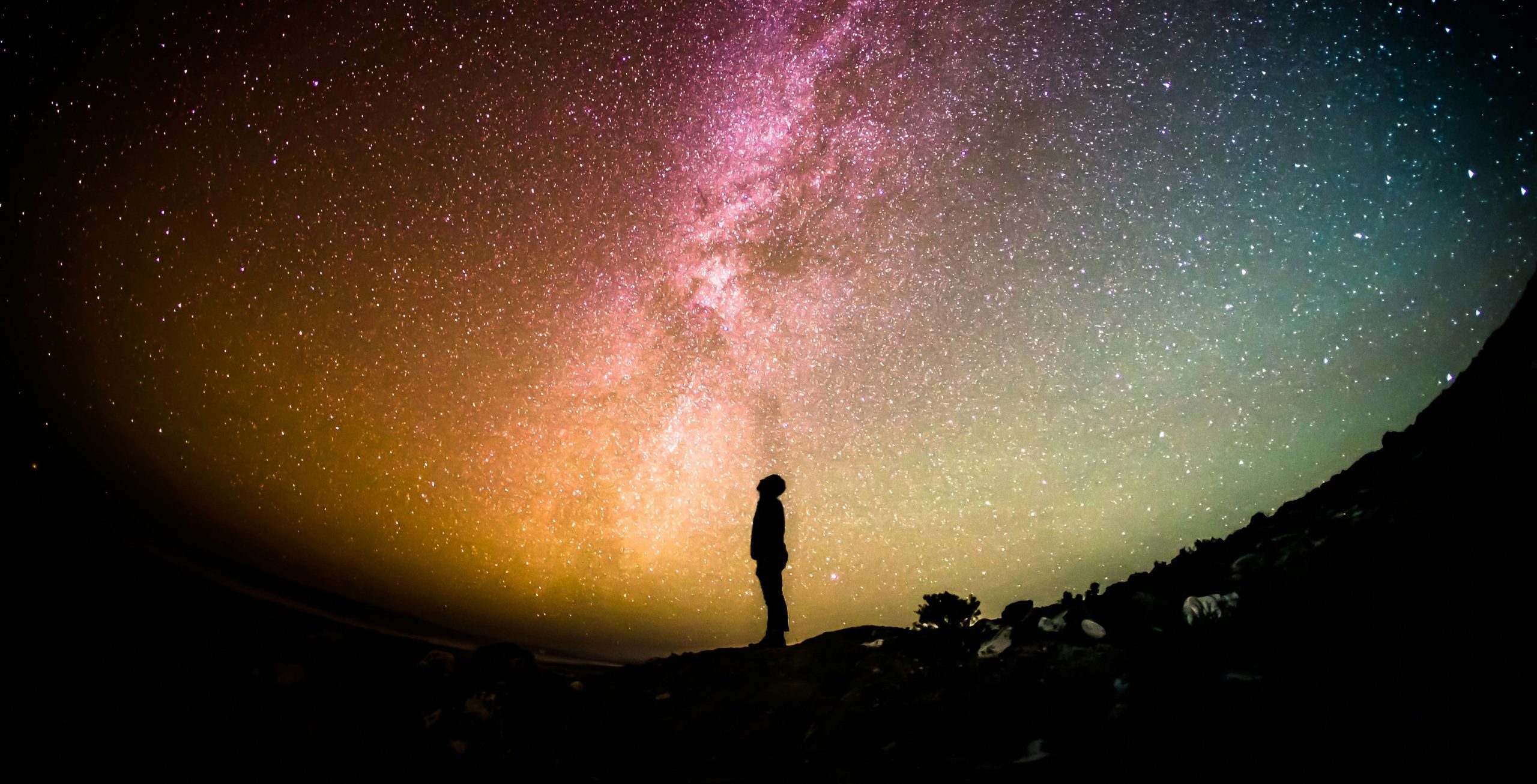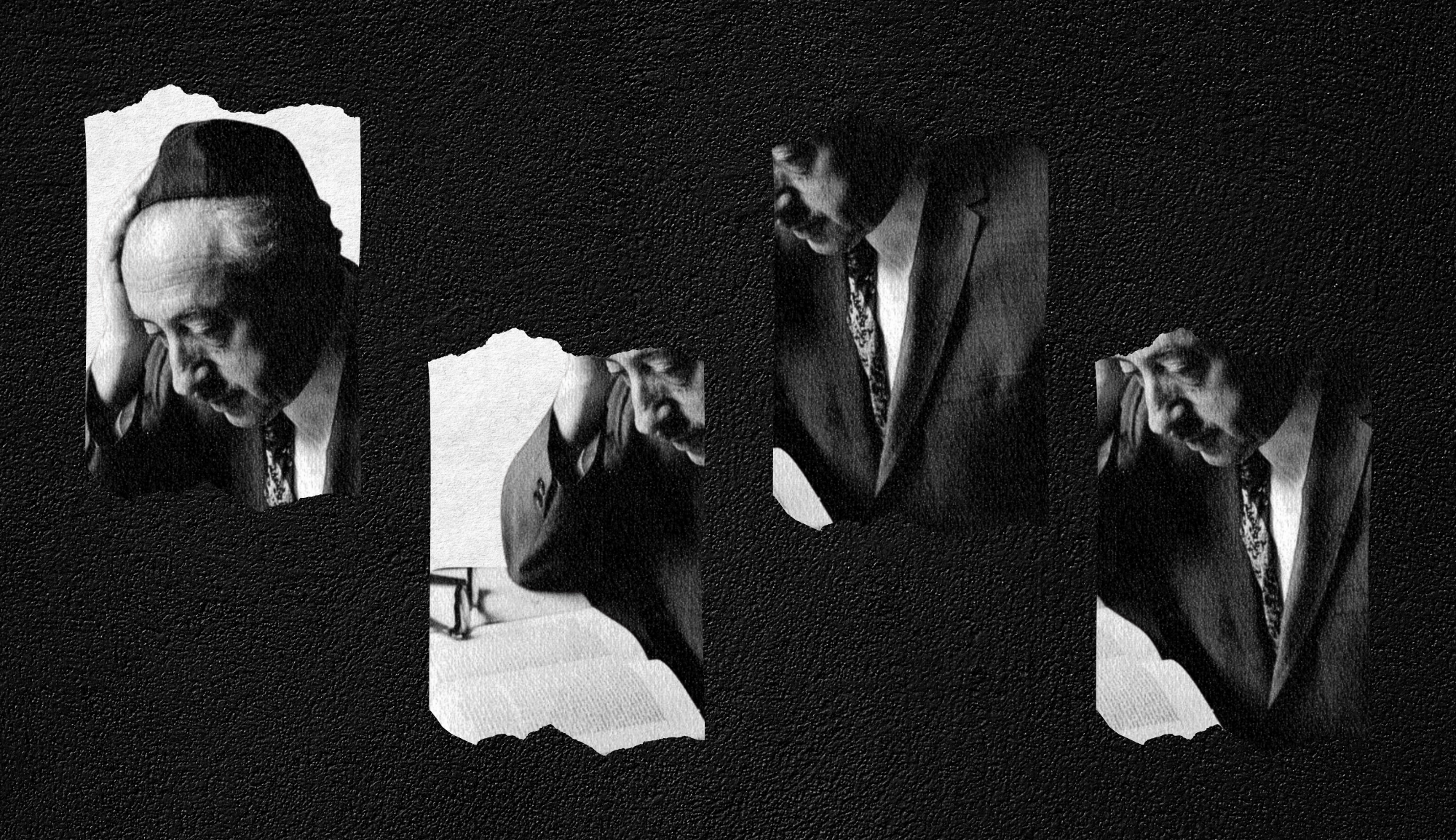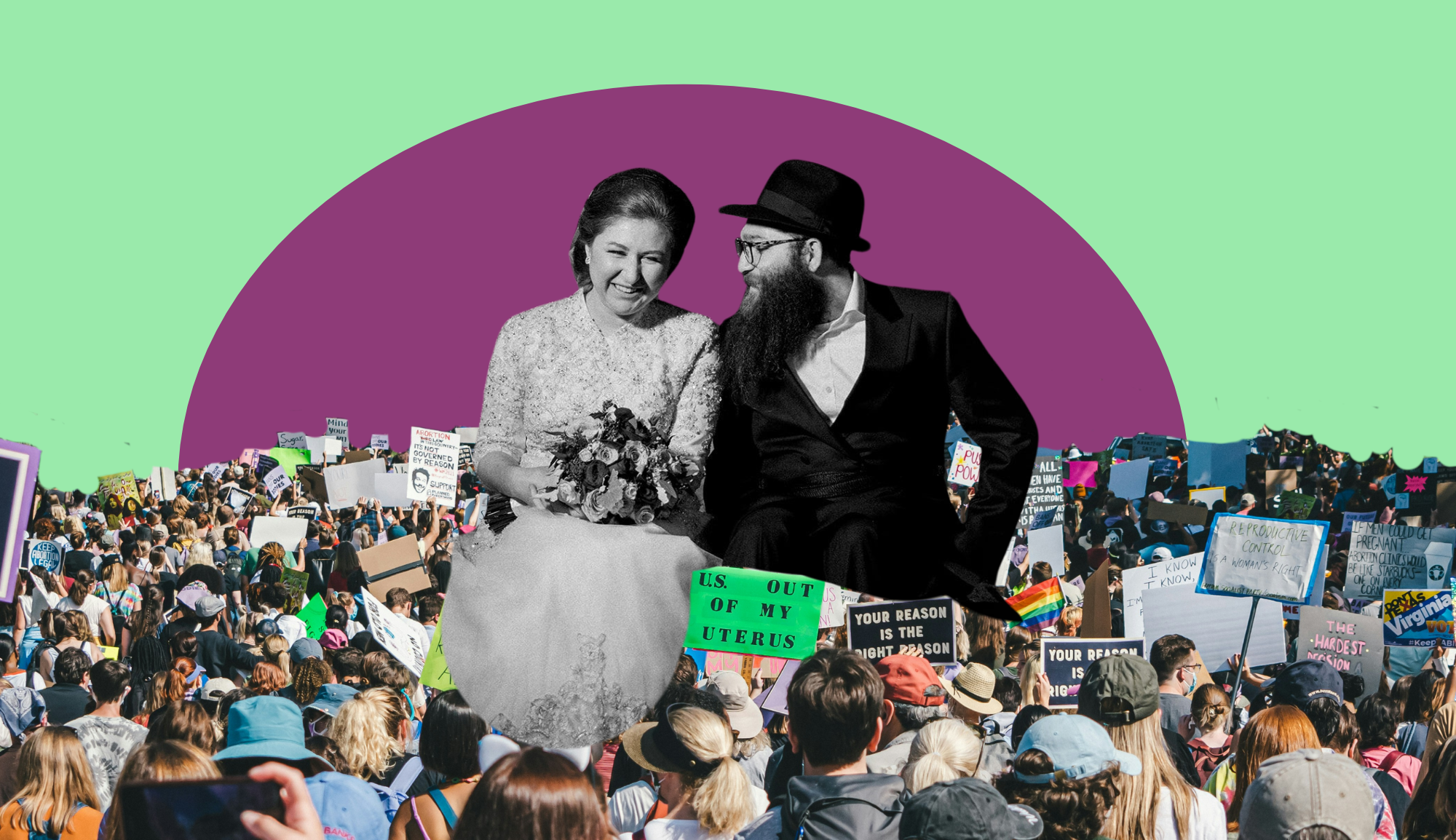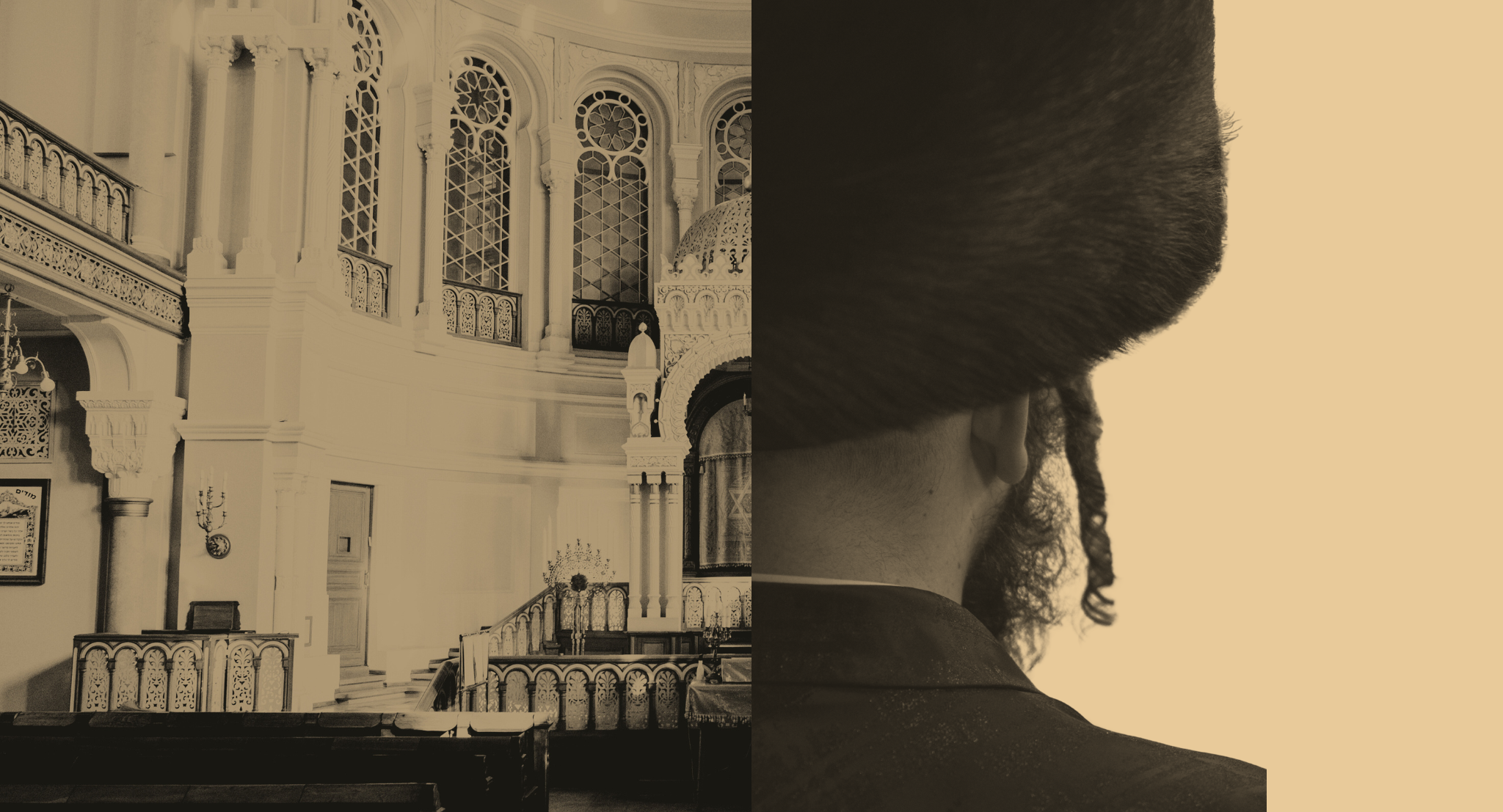Samuel G. Freedman: Can Jew vs. Jew Ever Become Jew with Jew?
In this episode of the 18Forty Podcast, we sit down with Professor of Journalism at Columbia and author, Samuel G. Freedman, to talk about dissent not as a cause of ugliness and divide, but of beauty and unity.
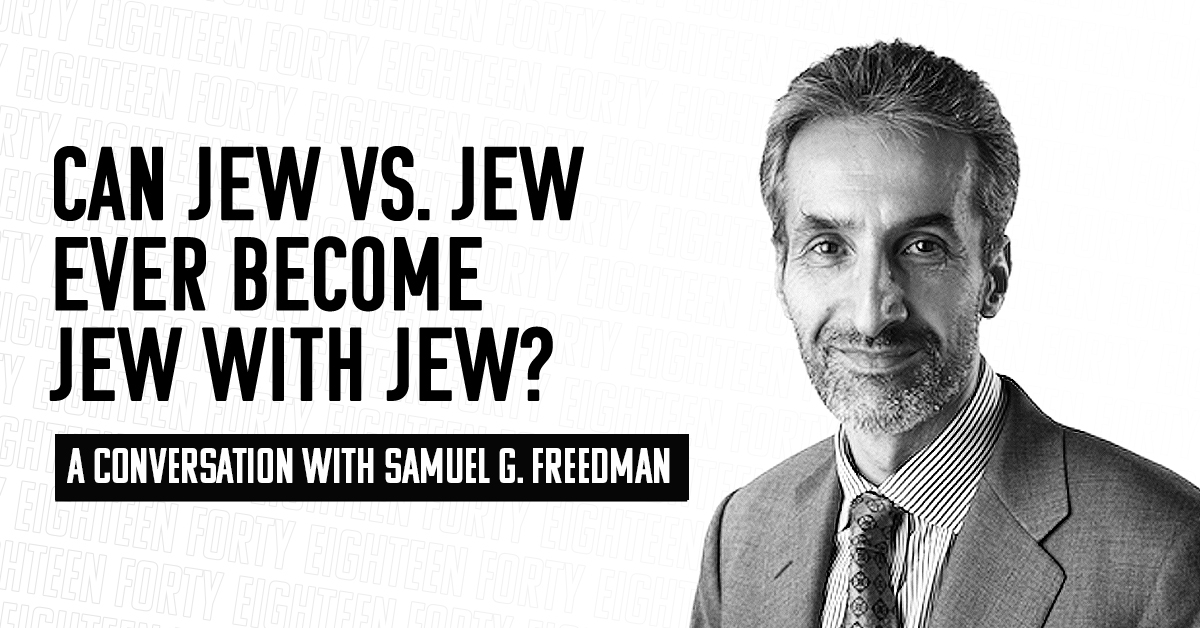
Summary
In this episode of the 18Forty Podcast, we sit down with Professor of Journalism at Columbia and author, Samuel G. Freedman, to talk about dissent not as a cause of ugliness and divide, but of beauty and unity.
Some would say that disagreement isn’t a bug of the Jewish community, but a feature. We have a rich history of debate in the Talmud and haven’t been able to shake this dubious quality even in the modern day United States. The internet has only exaggerated this, and while one can argue for the benefits of dissent, the fact that Jews seem embroiled in a perpetual state of debate remains.
- Is debate a healthy state of mind for our community?
- Should we be looking to avoid debate or embrace it?
- Does dissent cause only divide or can it be used as a means of understanding the other members of our community?
Tune in to hear Samuel discuss the roles that individual Jews play in the larger debate that is the Jewish community.
Transcript
David Bashevkin:
Welcome to the 18Forty Podcast, where each month, we explore a different topic balancing modern sensibilities with traditional sensitivities to give you new approaches to timeless Jewish ideas. I’m your host, David Bashevkin, and this month we’re talking about Jewish peoplehood. This podcast is part of a larger exploration of those big Jewish questions, so be sure to check out 18Forty.org, where you can find videos, articles and recommended readings.
When I was in my early 20s, I studied in a yeshiva in Baltimore called Ner Yisrael, and my chavrusa, my study partner at the time, was somebody named Levy Oken. We studied together for about two years, he’s doctor now, I think in Philadelphia, a dear, dear friend. He’s one of the friends who, we went through, I think I only have a handful of friends like this, who we went through elementary school, high school, gap year in Israel, and then Yeshiva Ner Yisrael, and then we reunited again in Yeshiva University. We spent a great deal of time together in the same institutional universe.
I remember he was engrossed in this book that had this really interesting cover and looked intriguing, and the book was called Jew vs Jew: The Struggle for the Soul of American Jewry, and I guess at the time, when you’re in your early 20s, there’s a little bit of hesitation or concern about zooming out and seeing the big Jewish story, and where your individual story. In my case it was a kid who grew up in the Five Towns in Lawrence, New York and went on to a regular yeshiva elementary school and yeshiva high school, and I was, not immune, but uninterested, maybe ignorant, of the larger questions and issues that American Jewry would grapple with. I think even the word “American Jewry” would get under my skin, I didn’t consider myself an American Jew, I considered myself a Jew. I was divorced from some of the larger struggles and pulls that were happening in the Jewish world,
I took this book, and I was probably 20-21 years old, I was always a big reader, so it wasn’t a great surprise that I read it, but I absolutely devoured it. I read it once, I read it twice, and about 15 years later, when I started teaching in Yeshiva University, I actually returned to this book and made it a central part of my curriculum on Jewish Engagements, talking about those big issues that college students in Yeshiva University may not be grappling with in the present, but it’s certainly things that they’re going to deal with and confront immediately after they leave. And I always found the book so remarkable because he takes a journalistic approach, really sober analysis, but very soulful in his appreciation and commitment to the survival of Yiddishkeit, of Judaism, in America and throughout the world.
The style of the book is really remarkable. It’s remarkable because every chapter has a sibling, where in every chapter, he’ll tell the story about some Jewish issue that embroiled an entire community and created a great deal of divisiveness, and we talk a great deal about this in our conversation, but right next to that chapter there is always a second chapter which has a sober history of how that issue has played out in American Jewry. It really gives you that forest of Jewish opinion and experiences, but also the tree of Jewish experience, and how these big issues play out, within families, and within individuals, and within communities. So I’ve always found the structure of the book, in a way, the most remarkable part of it. It’s exceptionally written. I believe it was a finalist for the Pulitzer Prize, it was a best seller on the New York Times bestseller’s list, and it’s a book that I think any inquisitive and curious Jew who’s interested in the story, not just of American Jewry, but Judaism in the modern world, how we’ve had issues that both divide us and bring us together, this is a must read book.
That’s why it is such a pleasure to invite today, to have a conversation with, Professor Samuel Freedman, the author of Jew vs Jew: The Struggle for the Soul of American Jewry. He’s a Professor of Journalism at Columbia University and a regular contributor to the New York Times and New York Magazine. He is a renowned professor, and I find his book to be absolutely remarkable. Before we jump to the conversation, I just want to read a piece that’s always stuck with me, because I love analogies and I love this analogy.
He talks about all of the changes in the American Jewish community leading up to the world that we’re in now. This book was published in 2000, and we spend a lot of time talking about what’s been happening in the 20 years since it’s been published. But this is how he describes the back and forth, the story of Judaism in America. He writes as follows: “As a jazz fan I might offer an analogy. From the 1900s through the 1970s, jazz was revolutionized by waves of innovation. Swing replaced the New Orleans style, bebop replaced swing, modal jazz replaced bebop, free jazz replaced modal. In the process, every rule of melody, harmony, and rhythm was shattered. And then, looking up from the wreckage, musicians realized there was nothing else left to rebel against. They could turn only in one direction: to the past, to the tradition.”
And he uses this analogy to explain the very strange, winding journey of Yiddishkeit in America, of Judaism in America, of how there have been so many experiments, things that have worked, things that have failed, rules and boundaries that have been played with and retreated from. Ultimately, like the story of jazz, after all the rebellions and difficulties, particularly in early American Judaism, there was only one direction that we could turn: to the past and to tradition. And I’m so appreciative of Samuel Freedman for his time, which is not in great abundance, that he took out to have this conversation, to talk about the trajectory, the story, of Judaism and the Jewish people in the United States of America.
Welcome to the 18Forty podcast, it is my distinct pleasure and privilege to have Professor Samuel Freedman, Professor of Journalism at Columbia University. He’s been a contributor to the New York Times, New York Magazine, a host of other national publications, and it’s really a pleasure to invite Professor Freedman to talk a little bit today about his amazing book, Jew vs Jew: The Struggle of the Soul of American Jewry. Professor Freedman, thank you so much for the taking the time out.
Samuel G. Freedman:
Well Professor Bashevkin, it’s great to be with you.
David Bashevkin:
I’ve read your book multiple times, I assign it to my class in Yeshiva University, and maybe you can take us through… Your book was published in the year 2000. Why did you decide to write a book about American Jewry, and why did you decide to write it in this way that weaves together the issues tearing us apart, as well as the narrative stories of how those issues come to bear?
Samuel G. Freedman:
I can answer that in two ways, Professor. I thought that there were a confluence of factors by the time we were getting close to the year 2000 that were showing some of the stresses on American Jewry, almost all which were attributable to the unique situation of post World War II American Jewry, which was having a population living in the Diaspora, with unparalleled acceptance, unparalleled social mobility, upward mobility, opportunities to assimilate, such as had never existed any time in the Diaspora for an extended period. There had been, even going back to antiquity, brief periods like this, or even if you want to go close to the present Weimar Germany, brief periods, and they all came to terrible ends. That had not been the case in the American experience, and the exceptional experience of Jews in America, which really begins with George Washington’s letter to the congregation in Newport at the time of the founding of the republic, accelerated even more post-World War II for a variety of reasons.
It also presented American Jews with challenges that Jews around the world had almost never had to face before. Not the challenge of being hated and excluded, but the challenge of being loved and being included, and in other words, not having external forces forcing you to come together as a community because you’re under ongoing or potential attack, and because you’re not allowed to take certain jobs, to live in certain places, to marry certain people. Both by choice and by necessity, you have to have a fairly cohesive community of your own. That was all changing rapidly post World War II, and I’ve wanted to explore the different manifestations of it.
And in terms of why I wrote it as a collection of narratives, there had been a couple of books shortly before I started doing my work on Jew vs. Jew that addressed the question of whether American Jewry and what’s causing conflicts, there was one that Alan Dershowitz had written, there was one that Elliot Abrams had written, and I felt that those books, and this is no diss to them, but they chose to argue a particular position. They were arguing for a certain side of the debate between, say, a more assimilationist, pluralistic version of American Jewry and a more particularist, religious version of it, and I felt that what was missing,was a book that tried to explore these points of conflict without taking a side, to really air out the beliefs on both sides.
And although I came to some conclusions about the future shape of the American Jewish community at the end of the book, before I got to that point, I didn’t want to show any of my cards and I wanted the reader to be faced with, not a battle of good vs. bad, because that’s easy, you always know what side you should be on, but I always felt the battle between two different versions of what the good American Jewish life is, or what the good American Jewish community is, or what the good Jewish engagement with America is. I think that’s a much more difficult situation for a reader to reckon with, and frankly, it’s a lot more interesting to write about because you’re not writing about a simple issue, you’re writing about principal wealth, well-thought-out arguments that at the same time you’re reconcilable.
David Bashevkin:
And I think you did an absolutely masterful job, I know I teach the course to my students, and we’ve had you on on the Zoom, and I always play a little game with them to guess your own religious background and leaning, and I think part of what makes the book so unique is how hard it is to guess where you land on the religious spectrum. How did you determine which were the stories that were animating American Jewry?
Samuel G. Freedman:
Actually it was a game of three-dimensional chess to put together this book because only part of the question was which issues to look at, and I’ll get to that in a second, but it was also, if I was going to write a book that was going to narrate post World War II American Jewry, and I’m writing it in the late 1990s, then I have to make sure I felt that the chapters were fairly evenly spread over the period from the end of World War II, or even more particularly, the beginning of the 1960s, and almost 40 years later. The chapters clustered up in the mid to the late 1990s just because that was going to be the easiest material to report. That wouldn’t work. And I also felt it had to be a book that felt truly national in scope, so I also had to make sure this wasn’t a book in which an inordinate amount of my attention went to the Jewish communities, let’s say, Metropolitan New York, the Tristate area, the Chicago area, South Florida.
David Bashevkin:
This is an issue any time we have a panel session and you need diversity, the bigger issue now isn’t just gender diversity, it’s making sure that not everybody is from New York and New Jersey.
Samuel G. Freedman:
Exactly, and I felt that if the book ended up leaning too heavily on just the New York metro area and one or two other big metropolitan areas around the country, like I said, South Florida and Chicago would be probably the next two, then that also would skew it. My three dimensions in three-dimensional chess were, what are the issues, when am I writing about them, and where am I writing about them? There are also certainly issues that I missed along the way, and we can talk about that later, but the ones I came around to were, first of all, what I felt was the precondition for so much that’s happened in the communal discussion in the post-war years was what became the first full chapter, which is a chapter about the demise of secular Yiddishkeit, Jewish peoplehood, in the US as embodied by a Farband Labor Zionist camp near Monroe, New York, juxtaposed against this unexpected boom in Haredi Judaism in this country, symbolized there by curiosity, well, the Satmar community that’s within a mile or two of where this camp used to be, and that was all set primarily in the early 1960s in one summer.
The other issues to me that were really important were the who is a Jew issue, which can be amorphous because it means a lot of things, so I tried to really zero in on what it really comes down to, most importantly, is conversion standards, because that’s the measurement of who is or is not accepted as being Jewish within what parts of the Jewish community. I found out about a really fascinating experiment in Denver, in the late 1970s, to try to have a joint conversion panel that involved, not the Haredi Orthodox, but Modern Orthodox, Conservative, and Reform rabbis, all collaborating, so that whoever in Denver would become a convert through that panel would be accepted, at least in Denver. It all fell apart in Denver for a variety of reasons, and I wanted to explore what the hope was and why it fell apart.
And then clearly issues around gender and egalitarianism and various forms of Judaic life is important. For that, you could have done worship, you could have done other things, I happen to look at a really fascinating struggle over text. A struggle on the part of a very, very knowledgeable, Conservative havurah in Los Angeles as though it was part of, called a “library minyan”. It’s, again, real argument for the sake of heaven, to use the Judaic term, over whether to include the Imahot, as well as the Avot, in the Amidah. As things have changed so much, and this was something I drastically misinterpreted, but at the time I was writing Jew vs. Jew, it looked like a final settlement between Israel and the Palestinians was imminent, so I was writing about the conflict about the peace process, more from the standpoint of what did it mean to be on the other side of that. I’ve wrote about a member of a conservative shul in Jacksonville, Florida who was so opposed to the peace process that he attempted to assassinate Shimon Peres when he was speaking at the shul.
David Bashevkin:
It’s a story that you have to read to believe it. I googled it after I read that chapter, I said, “Did this actually happen?” And it did.
Samuel G. Freedman:
It was a horrible, almost tragic, and very misguided thing for the man who did it to do. And then the final chapter was in a suburb of Cleveland, Beachwood, Ohio, which was about this idea of who sets the norms in the Jewish community. The advantage of writing about Beachwood is it took a literally concrete form because Beachwood is going through a zoning battle. In this case, it was about whether some land in what had been a mostly Reform and secular Jewish community could be rezoned to allow construction of a campus of shuls and day schools and so on for the Orthodox community. The zoning argument was really an argument over, if you’re the Reform and unaffiliated Jewsm “Will our version of Judaism be crowded out, will ours be disenfranchised?” And from the Orthodox perspectives, mostly Modern Orthodox, it was a proxy for, “Will our own people obstruct us from doing the things we need to be able to walk to worship, to send our kids to day school?” That wrapped together quite a few of the threads that had been earlier in the book.
David Bashevkin:
Your book highlights the disagreements of the Jewish people, and where they debate and where they argue. Why not write a book about the things that unite us? Why not write a book about the things that bring us together? And maybe as a follow-up: How did the process of this book affect your own personal Jewish identity?
Samuel G. Freedman:
Well, in terms of the conflict, I think this is probably what most journalists and most historians, and probably many social scientists as well, look for, are points of tension. Just at the writerly level that’s where drama is. It’s hard to make drama out of ongoing equanimity. But also, I think that people reveal themselves, what they stand for, what matters to them, at times of stress, and what I hoped to do was to have a positive role, to write a book about conflict that didn’t polarize, that didn’t take a side, that would let readers abide with the opinions of those with whom they disagreed. For both of those reasons I chose to look at these points of tension.
And for me it was an incredibly transformative experience, personally because I felt woefully inadequate to the task of doing this book. When I started on it, I had this idea, my editor really liked the idea, my agent really liked the idea, but I kept on saying to myself and sometimes to them, “Someone who grew up as a yeshiva bachur, someone who studies Daf Yomi, does Daf Yomi, that’s the person who should be writing this book. I don’t have the requisite depth of theological knowledge to weigh into this.” And eventually I just realized I had to take the plunge and try to educate myself, and allow myself to be educated by others, in the process. Also, as a writer, making sure I was having my manuscript critiqued by knowledgeable people at every stage of the process, including, most importantly, my congregational rabbi, at that time Gerald Zelizer, who’s a long time Conservative rabbi and former president of the Rabbinical Assembly –
David Bashevkin:
Did you send it to rabbis across the denomination? Because you deal with all of the denominations.
Samuel G. Freedman:
Well I sent early versions of the finished manuscript to a wide variety of rabbis. I did that towards the end of the process, but before going into final production, absolutely.
David Bashevkin:
If I can return back to your takeaway of becoming more immersed and more educated, it calls to mind what I think is one of the most powerful and almost jarring quotes you have in your book. It’s from Joshua Aaronson, a Reform rabbi in Beachwood, Ohio. In front of the shul, on Yom Kippur, and said as follows, allow me to read a little bit of it: “The ignorance of progressive Jews impedes our efforts to work with Orthodox Jews as true partners. Progressive Jews suffer from a self-fulling inferiority complex that could be erased through the most fundamental of Jewish enterprises: Talmud Torah. Many progressive Jews lack the basic lexicon that would enable us to engage our Orthodox co-religionists on an equal basis.” And he goes on to really excoriate, this to me is a mussar schmuz you would hear from a Rosh Yeshiva in a Beis Medrash. When you included this in here, I’m curious if you got any pushback, and did you include this in here because a part of it, it felt like your own process? It’s very similar to what you just said, which is that inadequacy that you felt from your own education.
Samuel G. Freedman:
I put it in there because I felt his critique, because he was a Reform rabbi, because he was one of the leaders in the fight against the rezoning, for him to make this critique had extra power, because it’s a critique from within the Reform polity, this isn’t someone from outside shaking their finger. I think it also lays bare something that I’ve certainly seen in my own congregational life and shul hopping and shul, at times, shopping, which is that there’s a gigantic difference between the way a typical Reform or Conservative rabbi lives her or his life, and the way the most committed 10 or 20% of their congregants, the ones who are the regular shul-goers, live their lives, versus the way the rest of the congregants around the books, but don’t show up very often, live their lives.
And I think what Rabbi Aaronson was saying is, “You’re not going to be able to be in this argument, and certainly not be able to win it, if your argument is based on not even knowing the precepts of what you’re arguing against.” And I think elsewhere in the book I think I quoted from the great Yiddishist and socialist intellectual, Irving Howe, who said that the ideal Jewish socialist should have gone to Talmud Torah, because if you’re going to reject religion in favor of a political belief system, you have to know what you’re rejecting and why you’re rejecting it.
David Bashevkin:
I want to move and talk a little bit, like, reflections. It’s been 20 years since you focused on these stories, and you have a very telling ending, which in your opening of your epilogue, you write: “In the struggle for the soul of American Jewry, the Orthodox model has triumphed.” And you’re writing this not as somebody who affiliated with the Orthodox community. Then you go on to make fairly bullseye predictions about what the future of Orthodoxy is going to look like, and the different splits that we’ll see in there, and we’ve definitely seen, and what the rest of liberal, American Jewry, what turns they’re going to take. My first question is: What do you think you missed?
Samuel G. Freedman:
First of all, what I missed is, first of all, I drastically misread where things were going with the peace process, and that was clear within a few weeks of the book coming out. The book came out in August of 2000, and as we know, by the end of September on the civil calendar, the Second Intifada had broken out, and that was the end of the peace process, and we’re still living with the aftermath of that. That’s what I missed right away, but a couple other things: I really missed the significance of Chabad as a movement. That’s a positive, I mean, Chabad has been one of the great phenomena within the American Jewish world in turning people on to Jewish practice, in being bridge builders between all different kinds of American Jews, in being this great example of community organizing. I don’t know if I was too affected by the fact that the Rebbe had died not that many years earlier, and there was a prevailing view, which turned out to be completely wrong outside Chabad, that the movement could not flourish without him. The opposite has been true. So I definitely wish I had put in more about Chabad.
I think I didn’t really see the pace of egalitarian worship and independent minyanim in the Orthodox world, or the Conservadox world, happening at the pace it’s happened. I think I correctly foresaw that female ordination, in some kind of Orthodox or quasi-Orthodox setting, was coming down the road and it was going to be very divisive within the Orthodox community, but I don’t think I foresaw how rapidly that was coming, how quickly it would be before you’d have Yeshivat Maharat, and before you’d have independent minyanim like Darkhei Noam on the Upper West Side. So the pace of that, I think, took me by surprise.
I don’t think I foresaw how quickly issues of LGBT inclusion were going to play out within, first the Conservative movement, and then the Orthodox. I think that’s been, in this way, a pretty positive story. The issue isn’t totally resolved to the satisfaction of all queer people, but if you compare the massive ruptures that have happened in the Roman Catholic community and in the Evangelical Protestant community over gay inclusion, what’s happened within the Jewish world has been much more positive, nourishing, and gracing. Not perfect, but it has not fallen apart, and I think that’s the case where, I think as they say in Sherlock Holmes stories, “It’s the dog that doesn’t bark that you should pay attention to.” So that’s a dog that didn’t bark.
The last thing I would say that I missed, which again, is a very positive thing, is the boom in multicultural Jewish identity for reasons both by greater amounts of voluntarily, volitional conversion, by which I mean not someone converting with a metaphorical gun to their head in order to marry someone, but converting out of a sincere and deep spiritual search. The acceleration of that, in the Jewish world, plus the effect of multi-racial adoption, the massive number of Chinese children, black children, whether American-born or from elsewhere in the African Diaspora, Latin-American children who have been adopted by Jewish families and need to be then converted. So for both of those reasons, you have this real, steadily growing population of Jews of color. That’s been a really thrilling development and an enriching one. And it’s also a really important counterweight to the usual worrying about intermarriage and people who are leaving the Jewish fold and what’s going to happen to us in the future. Unfortunately little attention tends to be paid for who’s coming into the fold. Even if the numbers aren’t comparable, the fact that there is a substantial inflow means something, and that’s another key event of the last 20 years, or key trend.
David Bashevkin:
I want to ask about two different populations, and advice you would give them, for how to foster that sense of Jewish identity and Jewish peoplehood that seems to elude, in so many chapters of your book, the efforts of different groups, whether it’s joint Bes Din together in Denver, or the Beachwood, Ohio case, or the who is a Jew. All of these cases, it seems to elude them. What advice, going through the book, would you give to mainstream Jewish institutions to foster a deep sense of Jewish identity and Jewish peoplehood around the individual Jews in this country?
Samuel G. Freedman:
Well I actually have a somewhat contrarian view on that. I tend to think there’s a lot of great programming that exists, some of which is offered very much out of certain legacy institutions within, and it’s more, how do you get people who are passive and saying “There’s nothing for me” to explore what’s out there? There’s all sorts of things, from Jewish film festivals, or Klezmer music festivals in the more secular cultural realm, to gap year programs of all sorts, all across the denominational map, to the proliferation of Jewish Studies departments at universities, including many universities, not only that are not Jewish ones, but you find at Catholic universities, universities that are explicitly Christian, that have Jewish Studies departments. So a lot is out there.
One thing, though, that a lot of Jewish organizations could learn from the Chabad example, and that is, what Chabad does is send its shluchim out there without much of a financial lifeline. They have to go, whether that’s a college campus, or somewhere in Alaska, or somewhere in Nepal, wherever it might be, and they have to figure out: What does this community want, and how can we provide at least some of that while also fulfilling our own agenda. Because Chabads have to be self-supporting, it also means that they’re not going to survive unless they get people to literally buy in. And I think the more we do of that, the better. Because the challenge we’re facing, and it’s both an opportunity and an obstacle, is that major institutions, the legacy institutions of American Jewish life, the federationalists in each metro area or big municipality, organizations like Hadassah, B’nai B’rith, the ADL. These are part of an aging population. Younger people, for whatever reason, aren’t committing to those in the same way their elders did. You have a much more multivalent, diffuse group of Jewish organizations out there. You also have a group of mega-philanthropists who can individually try to dictate an agenda, which we’ve never had before.
The bad thing, the critique you could make about the federation model and some of these other legacy organizations that I’ve mentioned is that, the critique you could make is, it was run by professionals, and they would sit there, on high, and say, “Here’s what we should do, and you, our public, should respond positively.” But the upside of it is that, it’s still those professionals trying to weigh competing interests and come up with a good choice of how to spend money. The risk you always have when you have mega-donors, and Gary Rosenblatt, the long time and recently retired publisher and editor of the New York Jewish Week has written eloquently about this, the risk with the mega-donor is that, yes, it’s great because you can jump start a program like Birthright if Michael Steinhardt can put 10s of millions of dollars right into it, and that’s a good thing. The downside is that you’re short circuiting all kinds of institutional expertise in philanthropic circles, and a philanthropist could just as easily put a huge amount of money in a program that’s not really that well-advised just because it’s that person’s pet project. The disillusion of a lot of our long-standing institutional structure, again, has obstacles, but also opportunities, for us to begin reinventing Jewish organizational life at the ground.
David Bashevkin:
You end this book with a very eloquent and almost moving, it’s tragic. This is how you conclude the entire book, the final two sentences of your epilogue: “It is tragic, yes, that American Jews have battered so bitterly, so viciously, over the very meaning of being Jewish. It is more tragic, perhaps, that the only ones fighting are the ones left who care.” What would you say, having gone through this book, and you’ve seen all of these different models, how do we reach the Jews who just don’t care? How do you foster, what is the value add to foster any sense of larger Jewish responsibility, a connection to the Jewish people, for the people who aren’t fighting with one another?
Samuel G. Freedman:
That’s the 64 thousand or 64 million or 64 billion dollar question, isn’t it? I think you have to look at organizations that have been successful. I mentioned Chabad, but another one, American Jewish World Service, is a good example of an organization that Ruth Messinger brought from being moribund into a tremendously active organization on Jewish social justice issues, and have to look, what did an organization like that do right? What are some of the vibrant, independent minyanim doing right? You have to look at what works and try to learn from it. That’s one piece, because I do think that the people who don’t care at any given moment still could be lit back up.
To some extent, you can never have a complete answer to that question, because what gets into someone’s soul, you can’t program from the outside. Who has the potential yid inside, and something makes that pilot light shoot up into bigger flame. If people knew what you could do to do that, everyone would do it. It’s like Springsteen once said about rock and roll, “If it was so easy, everybody could do it.” But beyond what’s ineffable in those personal awakenings, again, you have to model on what has worked. To go to the two examples I’ve cited, Chabad’s genius, which comes from the Rebbe, is, doing any mitzvah brings Mashiach closer. So don’t judge people for what they don’t do, get them to do something, and make it fun so that they’ll want to be part of it, so that they’ll want to increase their involvement, not out of guilt, but out of joy.
And I think what Ruth Messinger did really well at American World Jewish Service, she’s now retired, but the organization is still quite strong, is knowledgeably work with Jewish text. Get beyond this, “Well, being involved in social justice is a Jewish thing to do,” but instead drill down and try to educate people who came to her more out of a political point of view than a religious one, and say, “Whether you know it or not, there’s textual basis for this vague feeling you have, and here is the textual basis. Knowing the texts, whether you choose to believe in a divine being or not, knowing the text as part of our intellectual patrimony can only make you better at the social justice work you’re doing, and it will let you know in a deep way why it’s the Jewish thing to do.
David Bashevkin:
Let me ask you, forward looking: What worries you the most about the future of American Jewry, and what inspires you and heartens you most?
Samuel G. Freedman:
The first question is easy. I’m heartsick and deeply worried about the effect of the Trump presidency. I think Donald Trump has been a complete catastrophe for Jewish peoplehood and Jewish unity in this country, and he’s been a disaster for the connection of many American Jews to Israel. That by far, nothing comes close to that as a threat.
David Bashevkin:
I’m fascinated by that. Obviously there’s a big story about how so many in the Orthodox community actually have embraced Trump. Do you appreciate how political and religious values have intersected? I’m trying to get to the heart of what worries you, that this is going to be a gap. You’re worried that the values of American Jewry are going to be torn asunder that the people who support and oppose him?
Samuel G. Freedman:
This is an election that’s a choice between two dystopias that are being projected. One of them, I think, is based in fact, and one isn’t. We’re living in a dystopia of massive depth with no federal leadership to address it in the COVID epidemic and stirring up racial violence. So that’s one dystopia. The dystopia that Trump is proprietoring is that there’s an imminent socialist takeover of this country if the Democrats can win it all, freedom will be taken away, which I think is completely preposterous and groundless, but it has gotten traction. I think that when an election is seen as utterly existential on both sides that it’ll be like post Civil War America. How can you possibly repair the country, or Jewish people, after that? One thing we’ve learned from the Trump era is that we’ve never repaired from the Civil War.
David Bashevkin:
So let me ask you again, that’s a powerful response. What heartens you? What heartens you about the Jewish future?
Samuel G. Freedman:
I think what heartens me is that, in this era when the nature of our institutional life is eroding, in the era of cyberspace and all other forms of postmodernity, that all kinds of start ups are happening that are exciting. Again, whether it’s independent minyanim, whether it’s the Chabad movement, whether it’s Jewish film festivals and the boom in Jewish cuisine that people like Jeff Yoskowitz or Leah Koenig are part of now in their writing. All of that stuff is thrilling, and it makes the Jewish world an exciting place to be, and there will be a lot of good stuff there if we can survive the civil war.
David Bashevkin:
Let me ask you, I always end with a few rapid-fire questions, and I’m so appreciative of your time, as always. First question is, and maybe you can talk about your own experience in this: What books did you turn to to foster that deeper knowledge and appreciation of what it means to be a Jew?
Samuel G. Freedman:
I read a few. For a good one-volume history, Paul Johnson’s book, A History of the Jews, was really valuable to me. A lot of Arthur Hertzberg’s writing was valuable to me. Individual accounts of faith journeys – An Orphan in History by Paul Cowen, and The Lord will Gather me In by David Klinghoffer – really gave me a sense of the personal, spiritual journey and its role. And for mapping out with great academic research, many of the divides I was looking at, Jack Wertheimer’s book, A People Divided, was a really good academic treatment, excellent, very, very, very helpful to me. All of those were kind of broad, there were a lot of books I read for specific chapters in mine, but I think those were the most helpful handful overall.
David Bashevkin:
I always ask this question, it might strike you as a little strange, but I’m always curious about how productive people spend their day. What time do you usually go to sleep, and what time do you usually wake up in the morning?
Samuel G. Freedman:
I’m someone who needs seven or eight hours of sleep a night., so typically I’m asleep no later than 11 and up by around 7.
David Bashevkin:
Okay. And final question, and this might be a little strange to ask somebody who’s already in the upper echelons of academia and writing a book, but, if somebody were to give you a great deal of money that would allow you to take a protracted sabbatical and get a PhD, what do you think the subject of your thesis would be about?
Samuel G. Freedman:
That’s great, I sometimes have that fantasy. There are a lot of things that I’d like to do, but one thing that has always fascinated me, and I’d love to go to a place like JTS to explore this, is: What happens to the Jesus movement? How does Christianity come out of what was a Jewish movement? I’m really interested in the Jewish historical Jesus. Not the Messiah, not the Savior, but this person who was making a critique of temple Judaism, and also was part of this whole world of the Essenes and the Dead Sea cult. I’ve been fascinated with that part of Jewish history my entire life.
David Bashevkin:
I never would have guessed that from a person who focused on post War World II Jewry, but that could be the next Jew vs. Jew –
Samuel G. Freedman:
I’d just love to study it, I don’t think I need to write about it, but I’ve always been fascinated, and I think partly because the Christians have slathered their narratives so thickly on the historical events of that time that it makes me more compelled to be, at least for my own brain, to retrieve the Jewishness of that period, because we know, historically, Jesus didn’t declare a new religion. Maybe Paul did 6 years later, or maybe it was even 200 years later. So what’s the ferment of that time? What traumatized a lot of Jews in Judea under Roman oppression at that time? That’s all part of this ferment, and the search for what’s the redemptive answer for ourselves, and are the end times coming? All the things, again, that the Essenes and the Dead Sea sect really wrestled with it, and I’ve just always been fascinated with it from a kid who was not hugely knowledgeable but loved archeology.
David Bashevkin:
Professor Freedman, thank you so, so much for joining me today.
Samuel G. Freedman:
Professor Bashevkin, thank you so much for your great support of this book. I can’t tell you, 20 years after a book comes out, what it means for a writer to still be asked to speak about it.
David Bashevkin:
Absolutely. I’m glad to give you that joy and pleasure because I mean it and I appreciate it. So have a great day, thank you again, be well.
I hope you enjoyed our conversation together with Professor Samuel Freedman. I think the question that I’m always left with, after talking to him or after reading the book, is: If you were to write this book in 2020, Jew vs. Jew, what are the issues, and more importantly, what are those personal stories that you would couch those issues into? What are the chapters that have not yet been written in this book? This issues that animate us, the controversies that sometimes divide us. But what is the contemporary story? What are those family, communal issues that we could do a deep dive into that could write the next chapter of Jew vs. Jew: The Struggle for the Soul of American Jewry?
And I think it’s an interesting exercise because these stories, it’s not necessarily what hits the headlines. A lot of these stories are happening in our neighborhoods, maybe at our Shabbos table, maybe they’re happening in institutions that you affiliate with. And instead of looking at the next controversy, or the next Shabbos table conversation or issue, as something that’s divisive and angry and bitter, I think looking at it as a story, and thinking about how this larger world of Jewish ideas is now playing out in these contemporary stories of our lives around our tables, in our community, is something worth thinking about, and helps reframe the world that we live in, that ultimately, the next chapter – not just of his book, but the next chapter of the Jewish people – is something that we’re going to write on our own and explore on our own.
Thank you so much for listening. It wouldn’t be a Jewish podcast without a little bit of shnorring, so if you enjoyed this episode, please subscribe, rate, and review, and tell your friends about it. It really helps us reach new listeners and continue putting out great content. If you’d like to learn more about this topic or some of the other great ones we’ve covered, be sure to check out 18Forty.org. That’s the number “1-8” followed by the word “forty”, F-O-R-T-Y dot org, 18Forty.org. You’ll also find videos, articles, and recommended readings. Hope you have a great day.
Recommended Podcasts
podcast
Hadas Hershkovitz: On Loss: A Husband, Father, Soldier
In this episode of the 18Forty Podcast, we speak with Hadas Hershkovitz, whose husband, Yossi, was killed while serving on reserve duty in Gaza in 2023—about the Jewish People’s loss of this beloved spouse, father, high-school principal, and soldier.
podcast
Haviv Rettig Gur: ‘Hamas is upset the death toll in Gaza isn’t higher’
Haviv answers 18 questions on Israel.
podcast
Elissa Felder & Sonia Hoffman: How the Jewish Burial Society Cares for the Dead
Elissa Felder and Sonia Hoffman serve on a chevra kadisha and teach us about confronting death.
podcast
How Different Jewish Communities Date
On this episode of 18Forty, we explore the world of Jewish dating.
podcast
Red Flags: A Conversation with Shalom Task Force Featuring Esther Williams and Shana Frydman
We have a deeply moving conversation on the topic of red flags in relationships.
podcast
Einat Wilf: ‘Jews Are Never Allowed To Win, and Arabs Are Never Allowed to Lose’
The true enemy in Israel’s current war, Einat Wilf says, is what she calls “Palestinianism.”
podcast
The Dardik Family: A Child Moves Away From Zionism
In this episode of the 18Forty Podcast, we talk to Judah, Naomi, and Aharon Akiva Dardik—an olim family whose son went to military jail for refusing to follow to IDF orders and has since become a ceasefire activist at Columbia University—about sticking together as a family despite their fundamental differences.
podcast
Aliza and Ephraim Bulow: When A Spouse Loses Faith
In this episode of the 18Forty Podcast, we talk to Aliza and Ephraim Bulow, a married couple whose religious paths diverged over the course of their shared life.
podcast
Shlomo Brody & Beth Popp: Demystifying Death and the End of Life
In this episode of the 18Forty Podcast, we talk to Rabbi Shlomo Brody and Dr. Beth Popp.
podcast
‘Everything About Her Was Worth It’: The Life of Yakira Leeba Schwartz A”H
In this episode of the 18Forty Podcast, we talk to Yisroel Besser, who authored many rabbinic biographies and brought David Bashevkin to Mishpacha magazine, about sharing Jewish stories.
podcast
Menachem Penner & Gedalia Robinson: A Child’s Orientation
In this episode of the 18Forty Podcast, we talk to Rabbi Menachem Penner—dean of RIETS at Yeshiva University—and his son Gedalia—a musician, cantor-in-training, and member of the LGBTQ community—about their experience in reconciling their family’s religious tradition with Gedalia’s sexual orientation.
podcast
Benny Morris: ‘We should have taken Rafah at the start’
Leading Israeli historian Benny Morris answers 18 questions on Israel, including Gaza, Palestinian-Israeli peace prospects, morality, and so much more.
podcast
Rabbi Meir Triebitz: How Should We Approach the Science of the Torah?
In this episode of the 18Forty Podcast, we sit down with Rabbi Meir Triebitz – Rosh Yeshiva, PhD, and expert on matters of science and the Torah – to discuss what kind of science we can learn from the Torah.
podcast
Anshel Pfeffer: ‘The idea that you’ll obliterate Hamas is as realistic as wanting to obliterate Chabad’
Prime Minister Benjamin Netanyahu did not surprise Anshel Pfeffer over the last 17 months of war—and that’s the most disappointing part.
podcast
Why 1840?
In this episode of the 18Forty Podcast, we sit down for a special podcast with our host, David Bashevkin, to discuss the podcast’s namesake, the year 1840.
podcast
Larry and Tzipora Rothwachs: Here Without You — A Child’s Eating Disorder
In this episode of the 18Forty Podcast, we talk to Rabbi Larry Rothwachs and his daughter Tzipora about the relationship of a father and daughter through distance while battling an eating disorder.
podcast
Anita Shapira: ‘You cannot wipe out Hamas’
Leading Israel historian Anita Shapira answers 18 questions on Israel, including destroying Hamas, the crisis up North, and Israel’s future.
podcast
Talia Khan: A Jewish Israel Activist and Her Muslim Father
In this episode of the 18Forty Podcast, we talk to Talia Khan—a Jewish MIT graduate student and Israel activist—and her father, an Afghan Muslim immigrant, about their close father-daughter relationship despite their ideological disagreements.
podcast
Frieda Vizel: How the World Misunderstands Hasidic Jewry
In this episode of the 18Forty Podcast, we talk to Frieda Vizel—a formerly Satmar Jew who makes educational content about Hasidic life—about her work presenting Hasidic Williamsburg to the outside world, and vice-versa.
podcast
Gadi Taub: ‘We should annex the north third of the Gaza Strip’
Gadi answers 18 questions on Israel, including judicial reform, Gaza’s future, and the Palestinian Authority.
podcast
Lizzy Savetsky: Becoming a Jewish Influencer and Israel Advocate
In this episode of the 18Forty Podcast, we talk to Lizzy Savetsky, who went from a career in singing and fashion to being a Jewish activist and influencer, about her work advocating for Israel online.
podcast
Mikhael Manekin: ‘This is a land of two peoples, and I don’t view that as a problem’
Wishing Arabs would disappear from Israel, Mikhael Manekin says, is a dangerous fantasy.
podcast
Yishai Fleisher: ‘Israel is not meant to be equal for all — it’s a nation-state’
Israel should prioritize its Jewish citizens, Yishai Fleisher says, because that’s what a nation-state does.
Recommended Articles
Essays
This Week in Jewish History: The Nine Days and the Ninth of Av
Tisha B’Av, explains Maimonides, is a reminder that our collective fate rests on our choices.
Essays
I Like to Learn Talmud the Way I Learn Shakespeare
If Shakespeare’s words could move me, why didn’t Abaye’s?
Essays
3 Arguments for God’s Existence
Perhaps the most fundamental question any religious believer can ask is: “Does God exist?” It’s time we find good answers.
Essays
Fighting for My Father’s Life Was a Victory in its Own Way
After losing my father to Stage IV pancreatic cancer, I choose to hold onto the memories of his life.
Essays
Books 18Forty Recommends You Read About Loss
They cover maternal grief, surreal mourning, preserving faith, and more.
Essays
Benny Morris Has Thoughts on Israel, the War, and Our Future
We interviewed this leading Israeli historian on the critical questions on Israel today—and he had what to say.
Essays
Why Reading Is Not Enough for Judaism
In my journey to embrace my Judaism, I realized that we need the mimetic Jewish tradition, too.
Essays
A Letter to Children Estranged From Their Parents
Children cannot truly avoid the consequences of estrangement. Their parents’ shadow will always follow.
Essays
‘The Crisis of Experience’: What Singlehood Means in a Married Community
I spent months interviewing single, Jewish adults. The way we think about—and treat—singlehood in the Jewish community needs to change. Here’s how.
Essays
3 Questions To Ask Yourself Whenever You Hear a Dvar Torah
Not every Jewish educational institution that I was in supported such questions, and in fact, many did not invite questions such as…
Essays
(What) Do Jews Believe About the Afterlife?
Christianity’s focus on the afterlife historically discouraged Jews from discussing it—but Jews very much believe in it.
Essays
Do You Need a Rabbi, or a Therapist?
As someone who worked as both clinician and rabbi, I’ve learned to ask three central questions to find an answer.
Essays
Between Modern Orthodoxy and Religious Zionism: At Home as an Immigrant
My family made aliyah over a decade ago. Navigating our lives as American immigrants in Israel is a day-to-day balance.
Essays
Do We Know Why God Allows Evil and Suffering?
What are Jews to say when facing “atheism’s killer argument”?
Essays
The Erasure of Sephardic Jewry
Half of Jewish law and history stem from Sephardic Jewry. It’s time we properly teach that.
Essays
From Hawk to Dove: The Path(s) of Yossi Klein Halevi
With the hindsight of more than 20 years, Halevi’s path from hawk to dove is easily discernible. But was it at every…
Essays
Judith Herman Is Giving Voice to Survivors
Dr. Judith Herman has spent her career helping those who are going through trauma, and has provided far-reaching insight into the field.
Essays
‘Are Your Brothers To Go to War While You Stay Here?’: On Haredim Drafting to the IDF
A Hezbollah missile killed Rabbi Dr. Tamir Granot’s son, Amitai Tzvi, on Oct. 15. Here, he pleas for Haredim to enlist into…
Essays
The Hardal Community Explained: Torah, Am Yisrael, and Redemption
Religious Zionism is a spectrum—and I would place my Hardal community on the right of that spectrum.
Essays
A Brief History of Jewish Mysticism
To talk about the history of Jewish mysticism is in many ways to talk about the history of the mystical community.
Essays
Rabbi Eliezer Berkovits’ Complicated Portrait of Faith
Meet a traditional rabbi in an untraditional time, willing to deal with faith in all its beauty—and hardships.
Essays
How and Why I Became a Hasidic Feminist
The Lubavitcher Rebbe’s brand of feminism resolved the paradoxes of Western feminism that confounded me since I was young.
Essays
When Losing Faith Means Losing Yourself
Elisha ben Abuyah thought he lost himself forever. Was that true?
Recommended Videos
videos
Mysticism
In a disenchanted world, we can turn to mysticism to find enchantment, to remember that there is something more under the surface…
videos
18Forty: Exploring Big Questions (An Introduction)
18Forty is a new media company that helps users find meaning in their lives through the exploration of Jewish thought and ideas.…
videos
Talmud
There is circularity that underlies nearly all of rabbinic law. Open up the first page of Talmud and it already assumes that…
videos
The Hasidic Rebbe Who Left it All — And Then Returned
Why did this Hasidic Rebbe move from Poland to Israel, only to change his name, leave religion, and disappear to Los Angeles?
videos
Did Judaism Evolve? | Origins of Judaism
Has Judaism changed through history? While many of us know that Judaism has changed over time, our conversations around these changes are…
videos
Jonathan Rosenblum Answers 18 Questions on the Haredi Draft, Netanyahu, and a Religious State
Talking about the “Haredi community” is a misnomer, Jonathan Rosenblum says, and simplifies its diversity of thought and perspectives. A Yale-trained lawyer…
